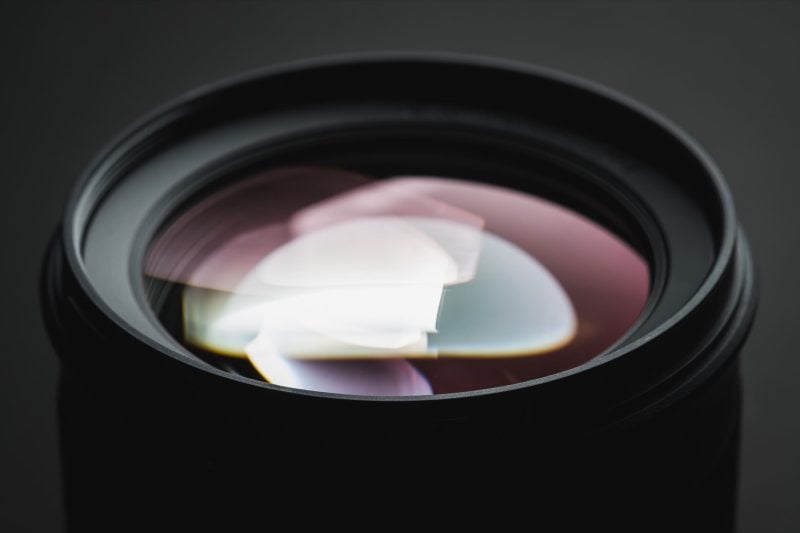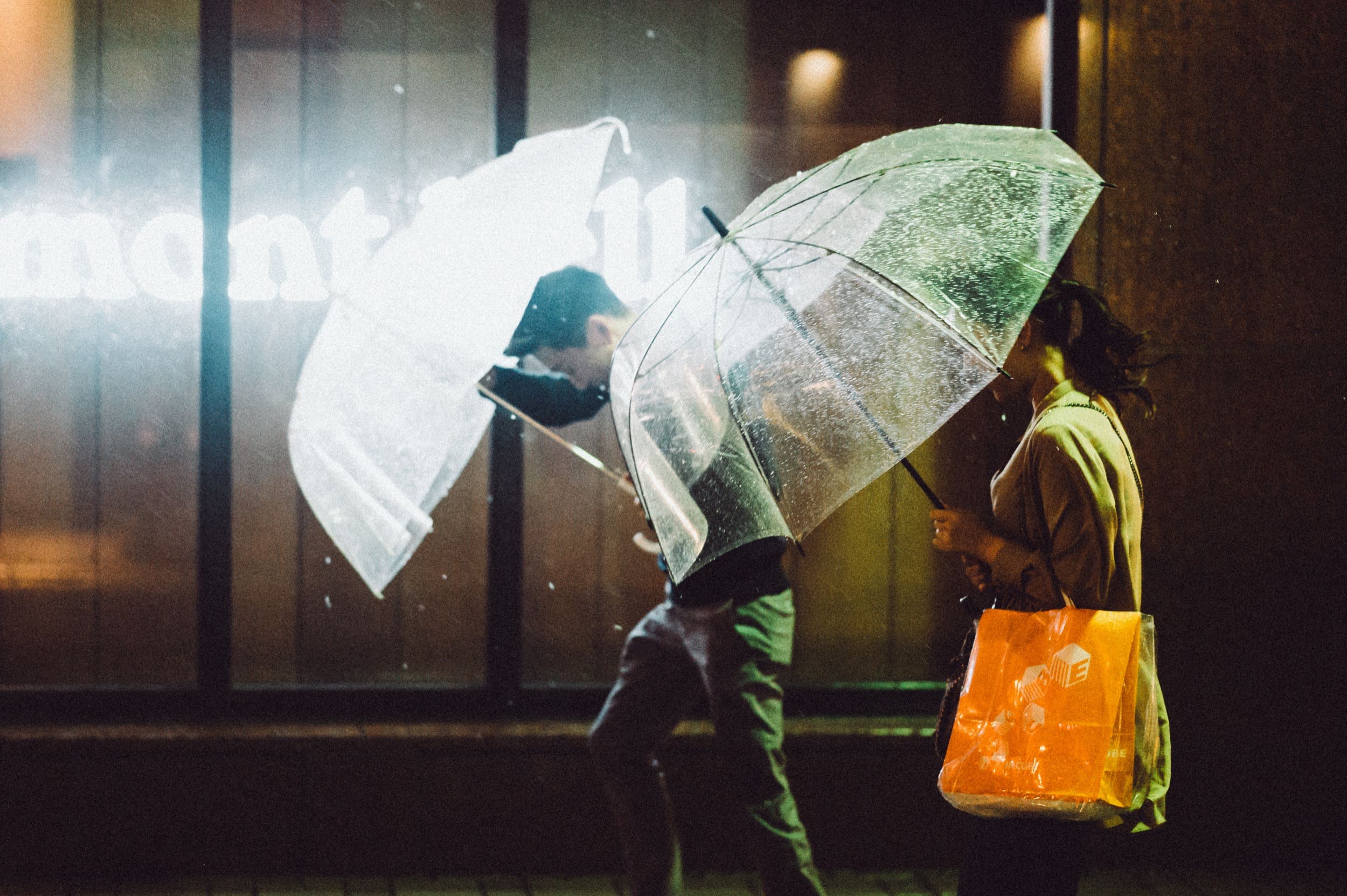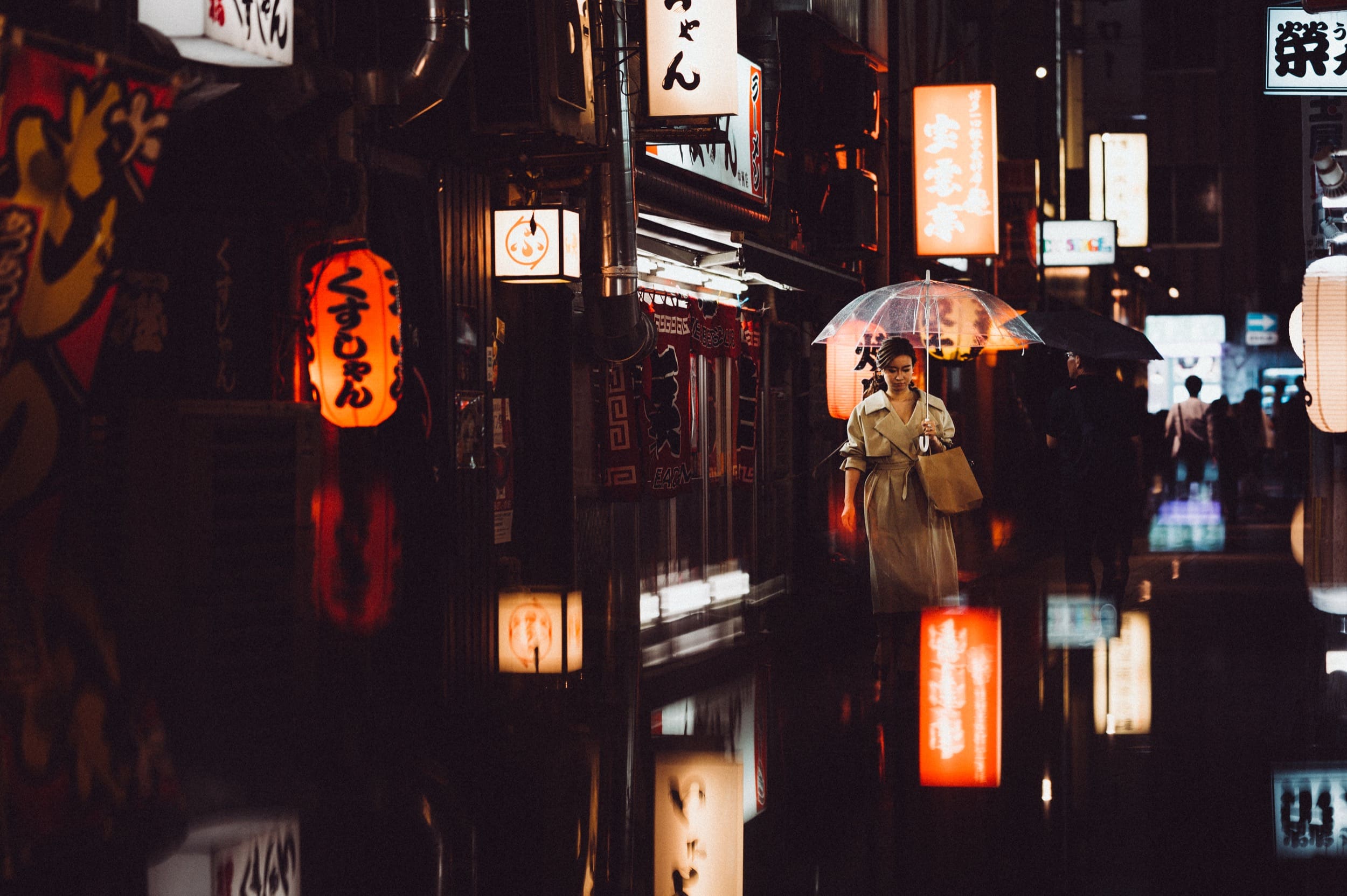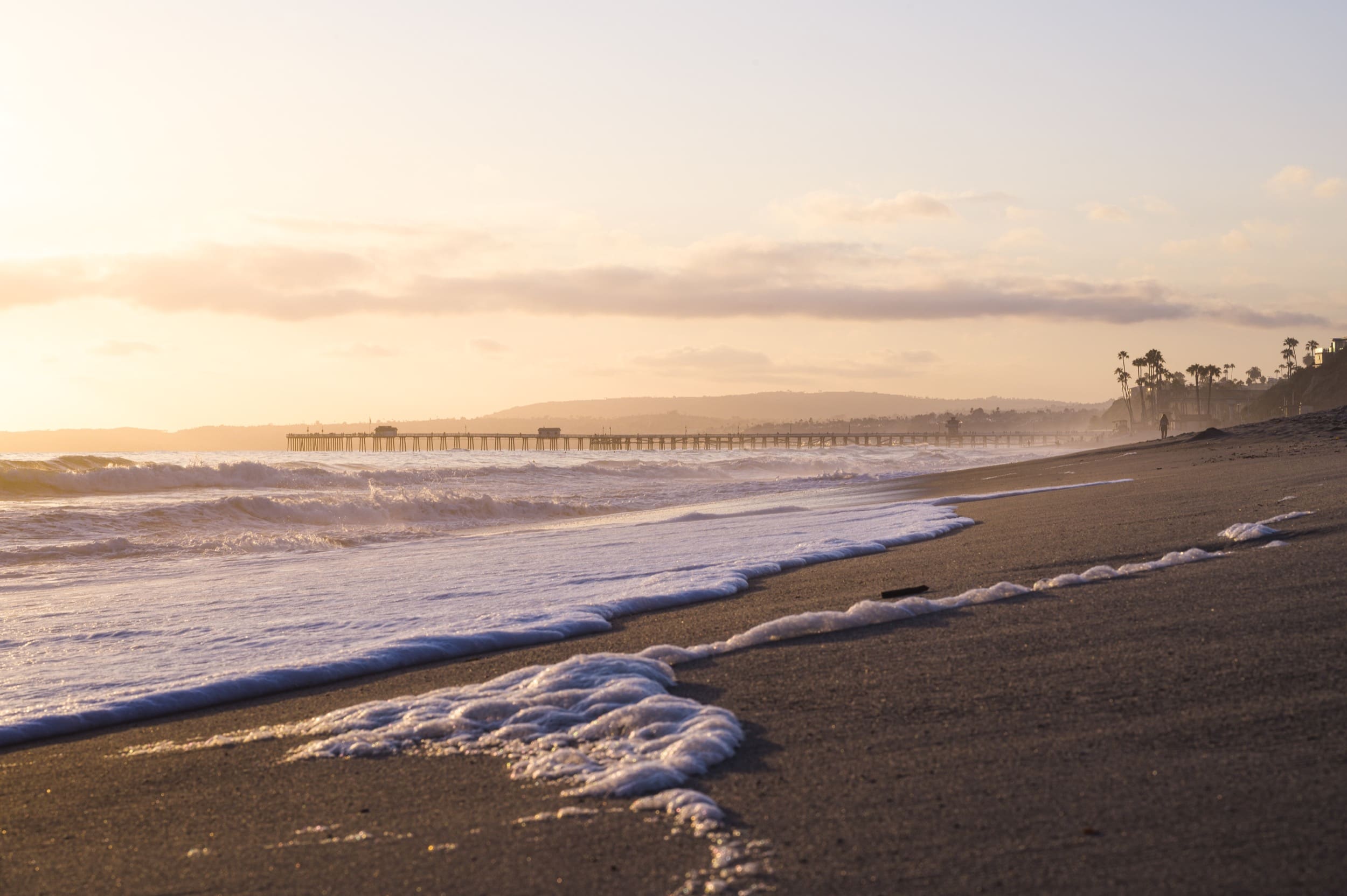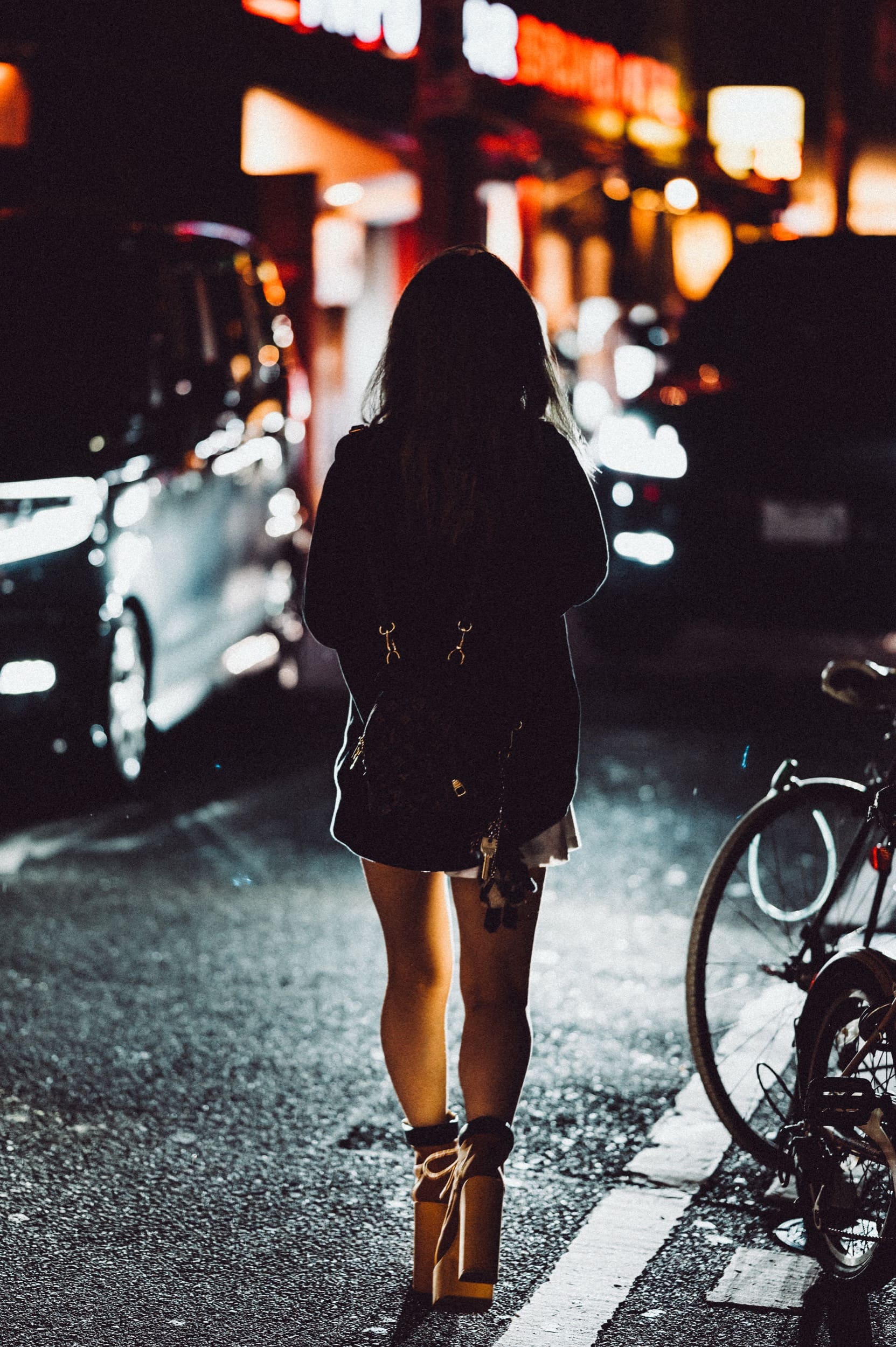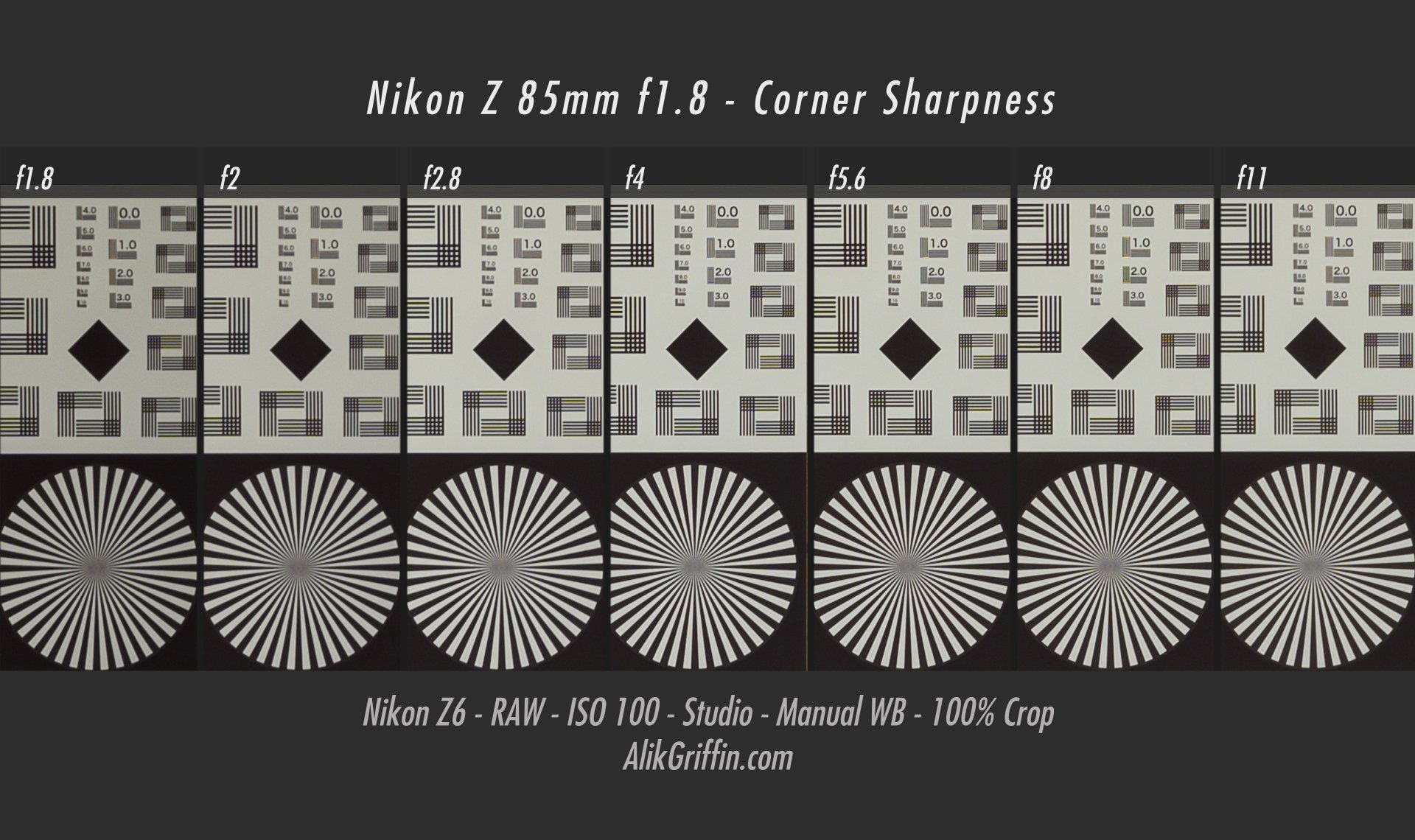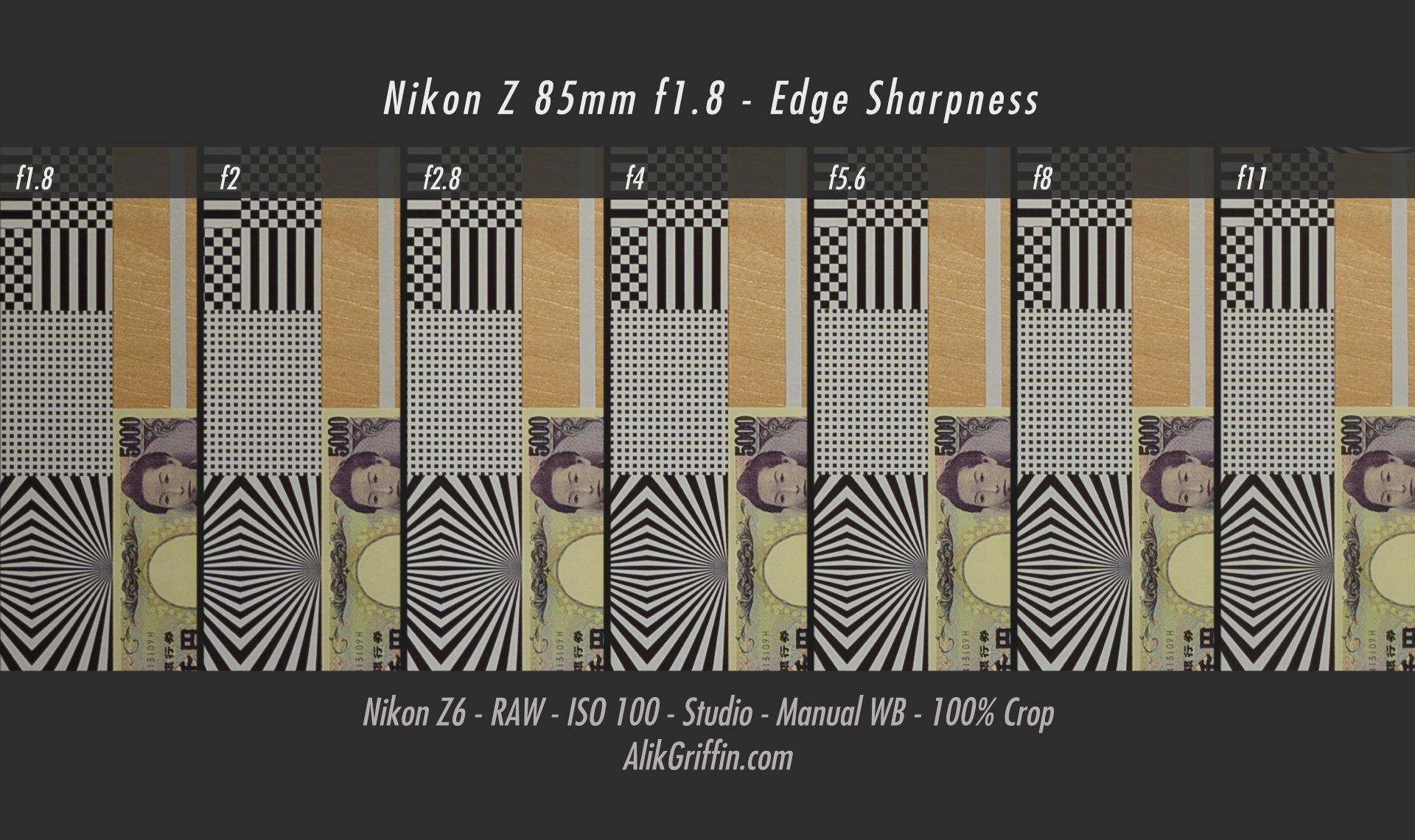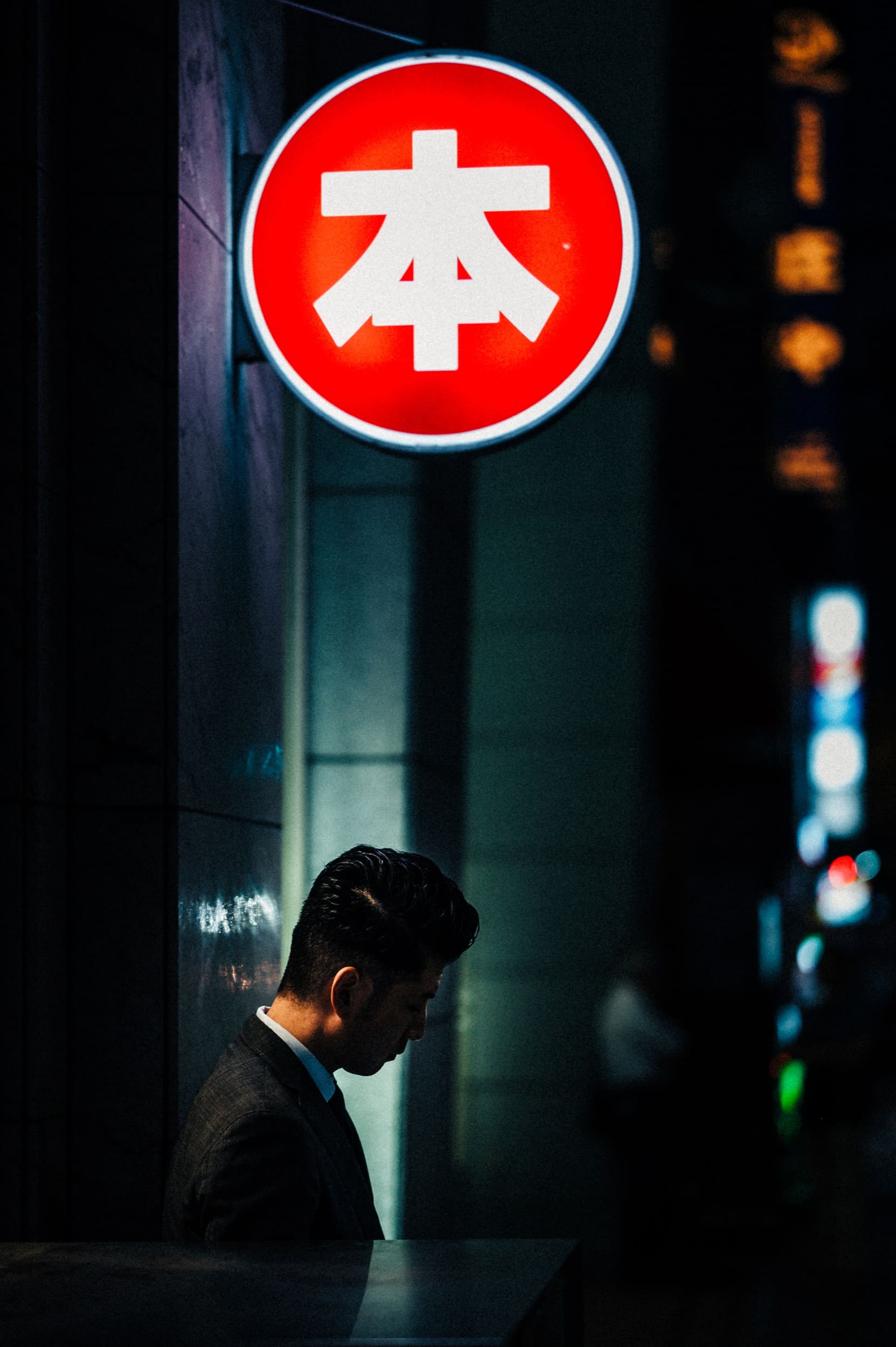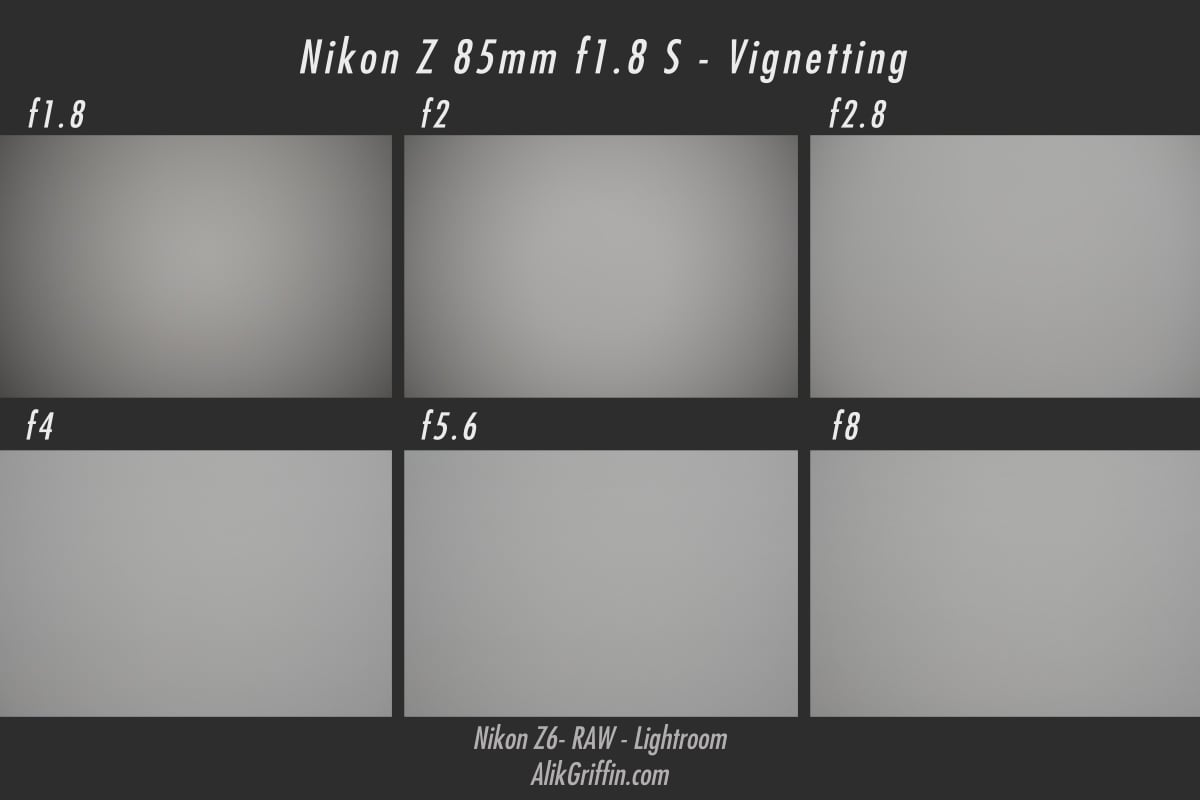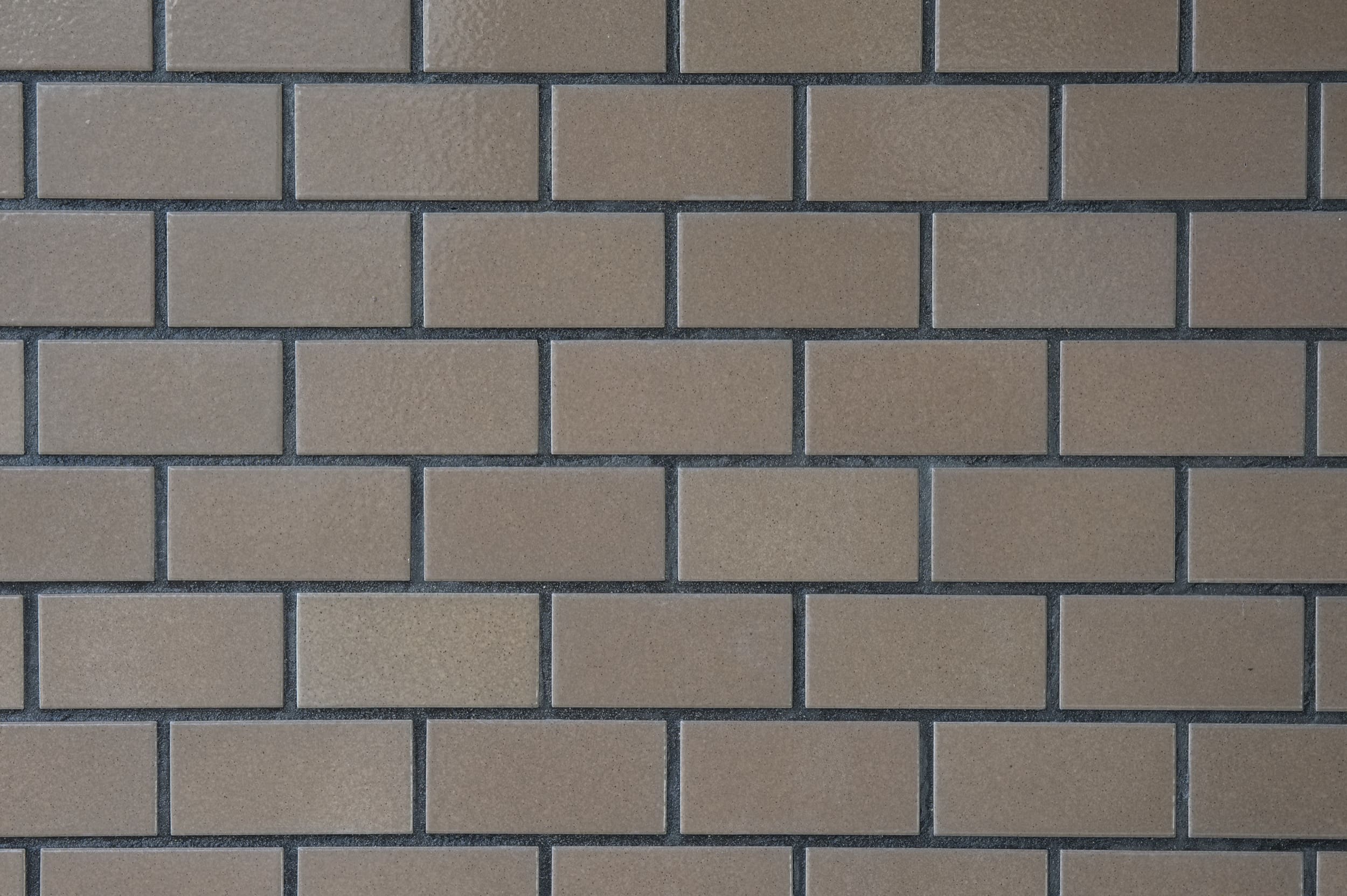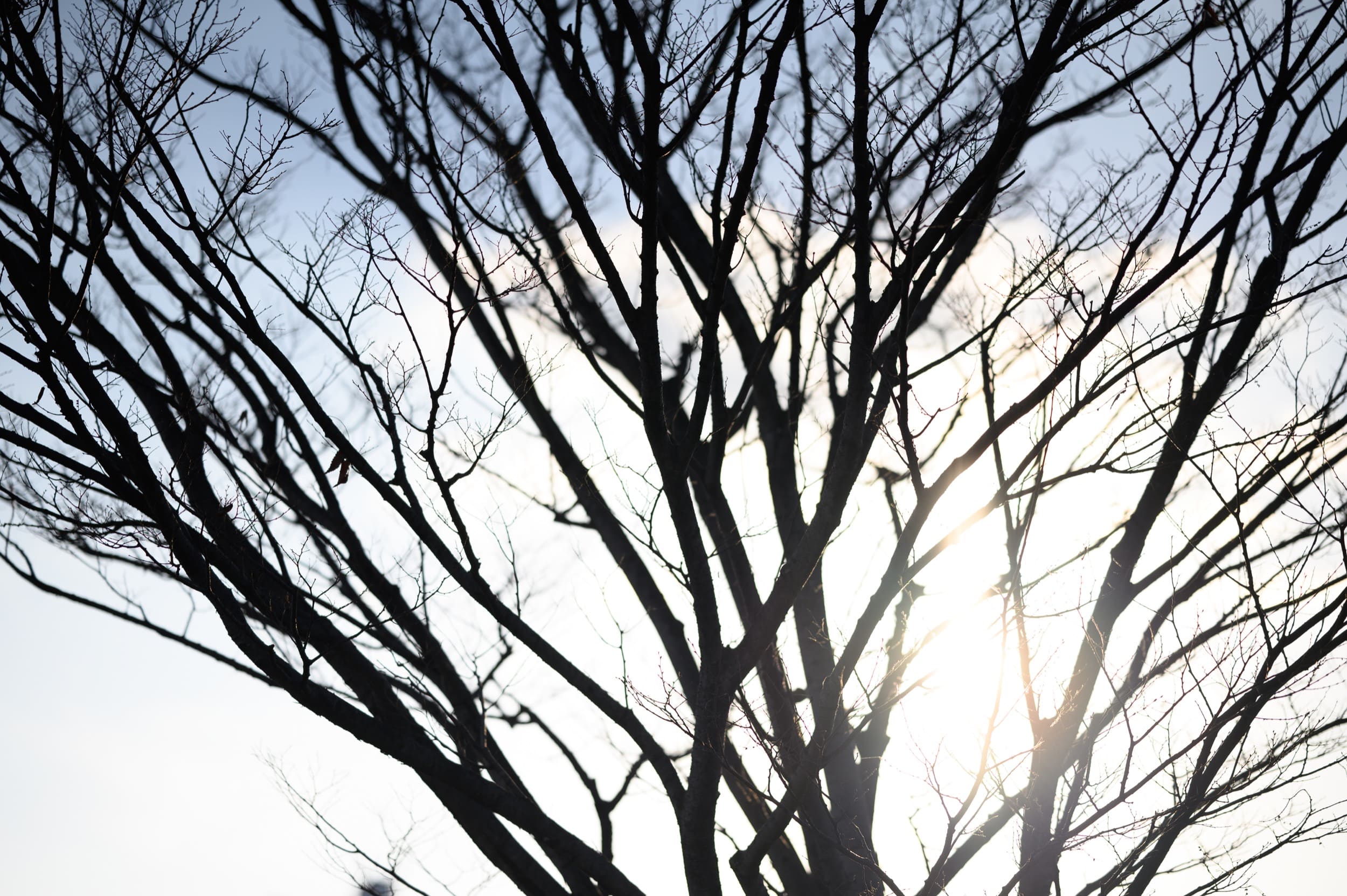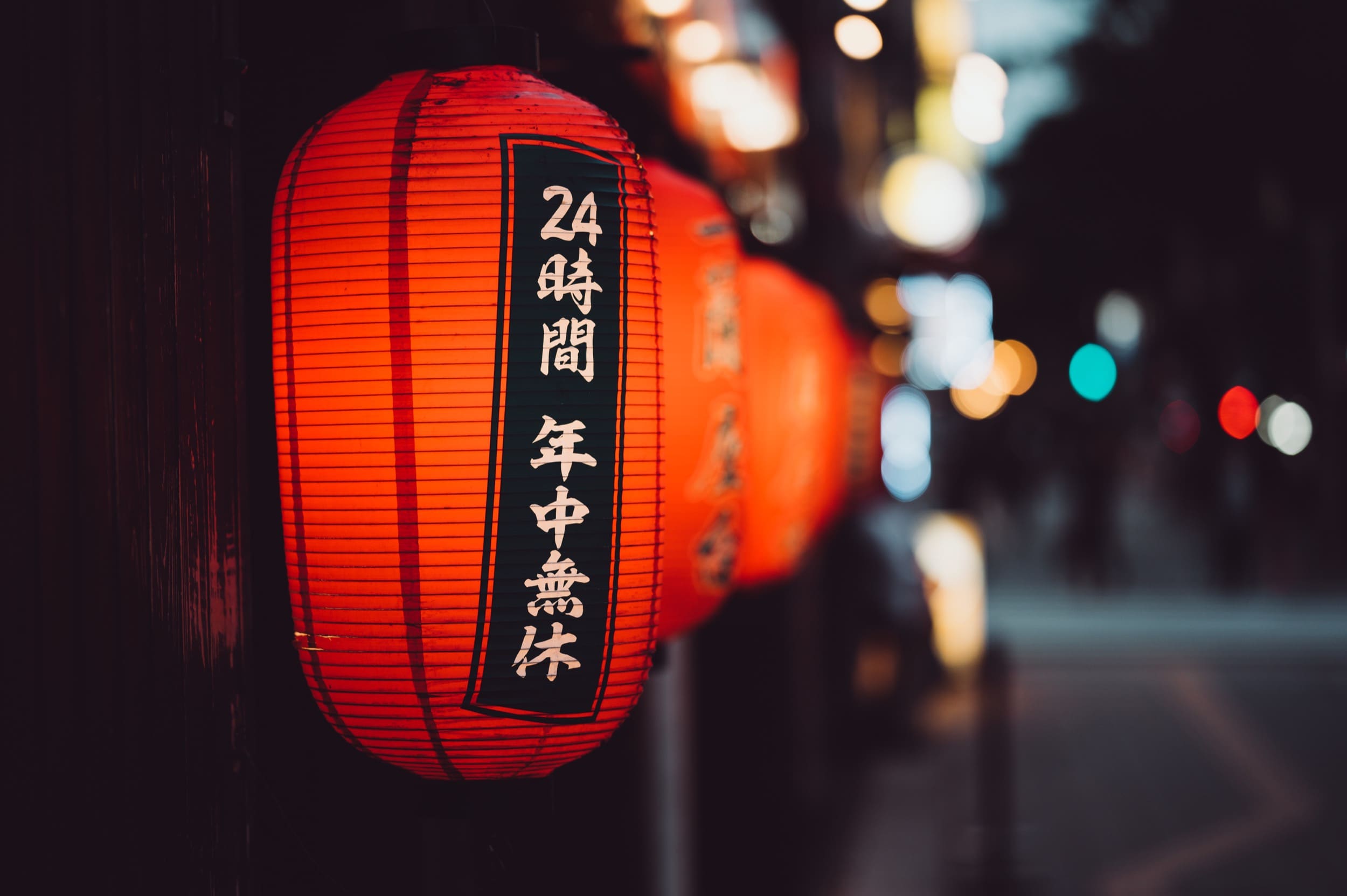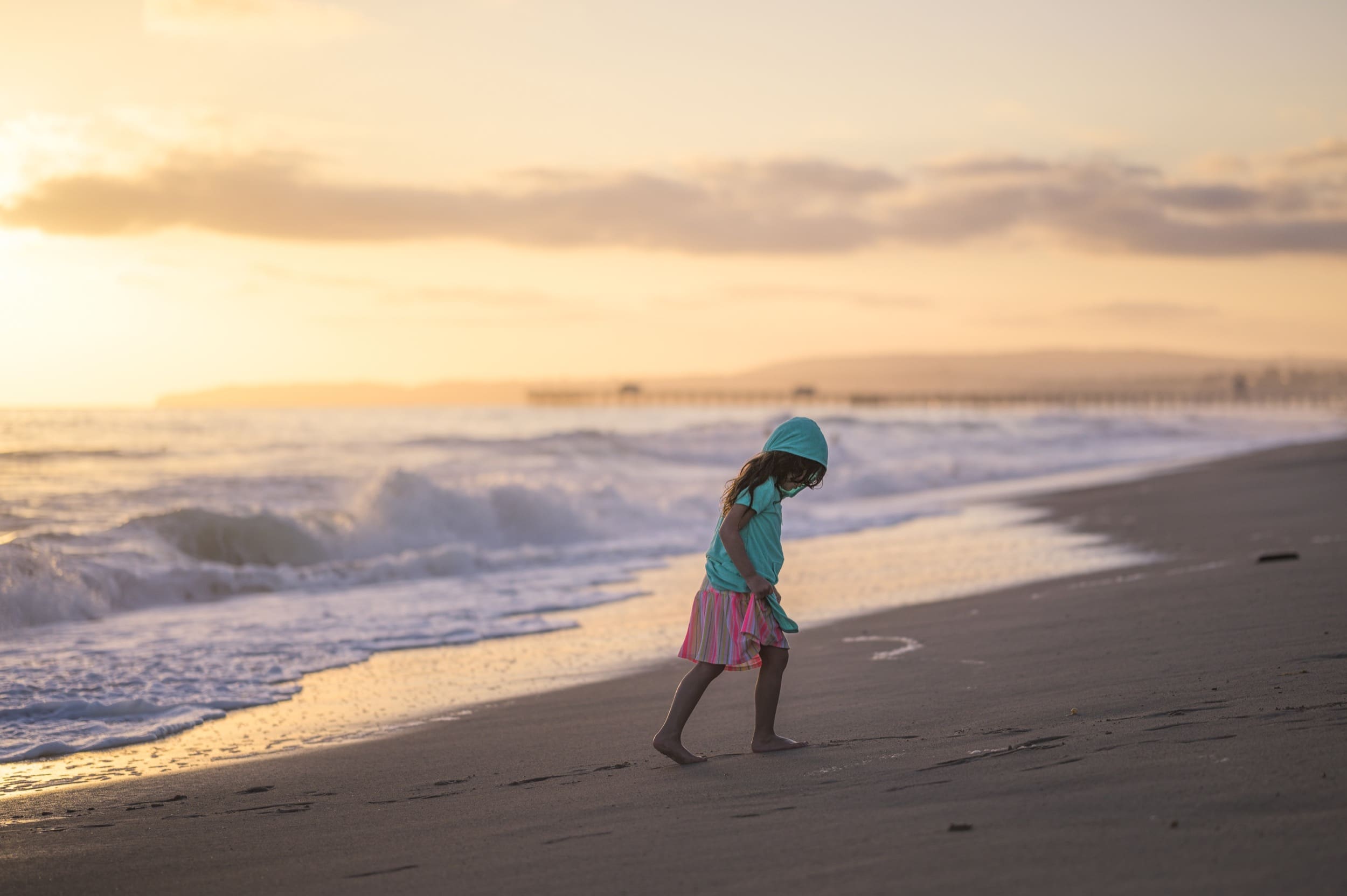The Nikon Z 85mm f1.8 S is an extremely versatile, lightweight, yet affordable 85mm f1.8 prime lens. This lens was designed for both photographers and videographers in mind with some useful video features like silent focusing. Still, unlike many other Z primes, this will show some focus breathing. The lens also uses a weather-sealed single barrel construction with all internal focusing elements and dual focus motors for improved close focusing capabilities.
Lens Stats
| Focal Length: 85mm Focus System: Auto Aperture Blade: 9, Rounded Aperture: f1.8 – f16 Elements: 12 Elements in 8 Groups / Two Extra-Low Dispersion Elements Coatings: Nano Crystal & Super Integrated Coatings Weather-Sealed: Yes Minimum Focus Distance: 2.62′ / 80cm Filter Threads: 67mm Weight: 1.03 lb / 470 g |
Nikon Z 85mm f1.8 S – Amazon / Adorama / BHphoto
What’s Good – Very sharp even wide open, sharp at all distances, nice corner sharpness, great build quality, quiet focusing, internal focusing design, weather-sealed, dual focus motors for close sharpness, good contrast, very smooth manual focus control.
What’s Bad – A lot of cat’s eye bokeh for an 85mm, focus-breathing with extreme racks, not a lot of pop (micro-contrast)/a little clinical with rendering – for a prime.
Table Of Contents
Nikon Z 85mm f1.8 S Review | Impressions
The Nikon Z 85mm f1.8 S is undoubtedly an exciting lens. It’s fairly lightweight, and because of the f1.8 aperture at 85mm, it has a very shallow depth of field. The thing is also just sharp.
Nikon has done a pretty good job of keeping a consistent look between its Z lenses with the way it handles focus fall-off. The lenses render what’s in focus to what’s out of focus very smoothly and consistently.
If you switch from 35mm to 50mm to 85mm, there won’t be a dramatically different style to the feel of the images.
Of course, there are some differences in character. For example, the 85mm has quite a bit of cat’s eye bokeh in some situations. It also doesn’t have quite as much punch as the 50mm or the 35mm, and in general, the images render tonally a bit flatter than the last generation of F lenses. But technically, these are much nicer and give you a lot more capabilities.
Is f1.8 fast enough?
I’ve been shooting a lot of low-light street photography throughout the Z6’s life, and as the camera gets better at AF with firmware, the lens also gets better. Today, there aren’t any issues with AF using this lens with the Z6 in reasonably low light unless you’re shooting in extremely low light conditions; then, you might benefit from something faster if it ever comes.
In terms of the bokeh and rendering of f1.8, I think f1.8 is the sweet spot for a general full-frame lens. Any faster could potentially put you in a dangerous habit of always shooting wide open and losing your background, especially on an 85mm. And to be honest, even f1.8 is too shallow many times. This makes f1.8 a great general-purpose lens with a nice balance between price, size, and capabilities.
What else is great about f1.8 is that it still allows you to shoot wide open in mid-day sun without an ND filter on Nikon cameras. Anything faster, and you would then need to carry around ND filters to shoot wide open in the day on a mechanical shutter.
In these samples, you get some really good subject separation, but you can also still get an idea of what’s going on in the background, which is right about where I like it for street photography in this style.
If you’re doing full-body portraits, an f1.4 or f1.2 lens could be handy since you lose depth the further away the subject is. But for general day-to-day stuff, I’m finding f1.8 to be practical.
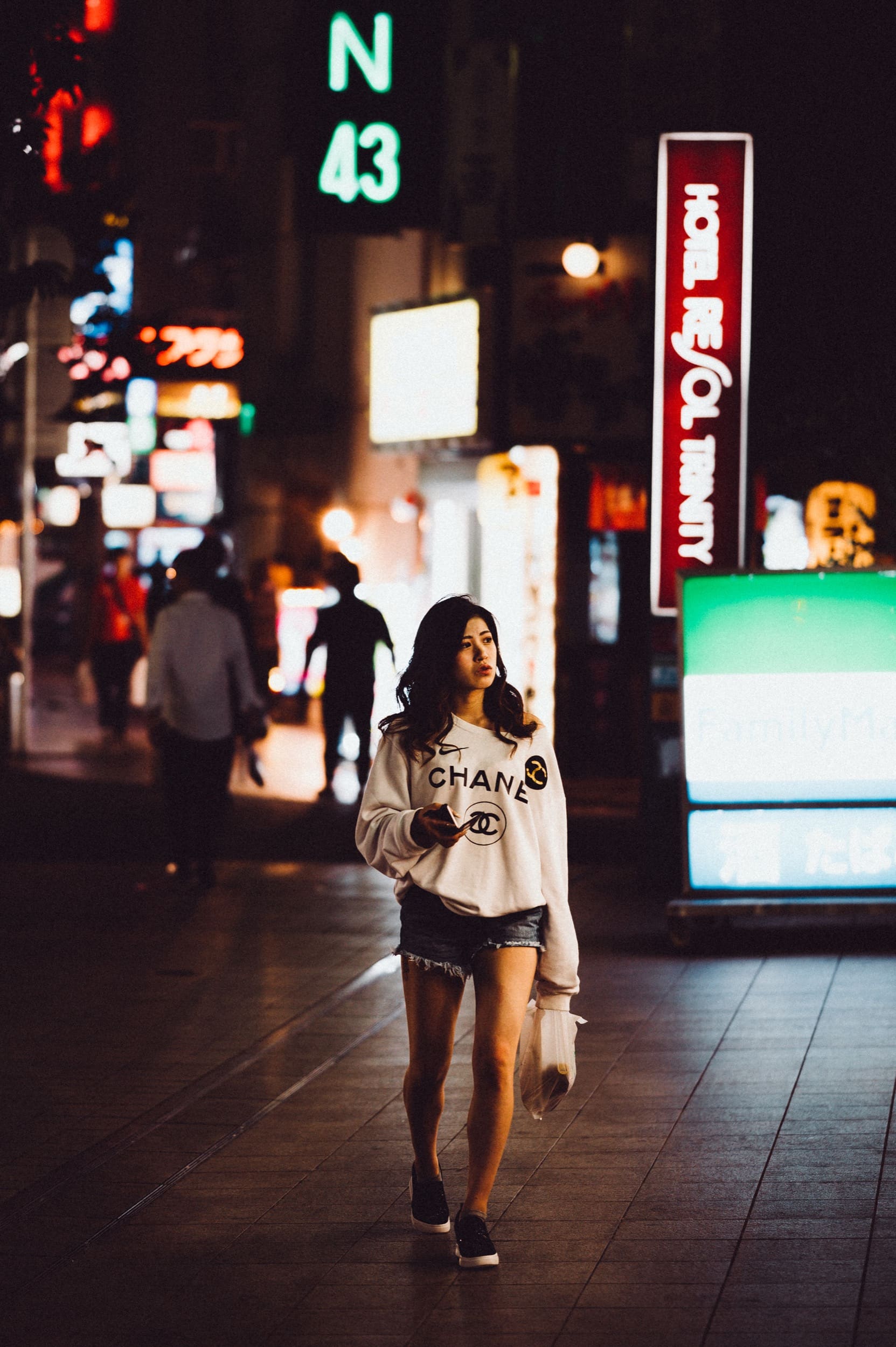
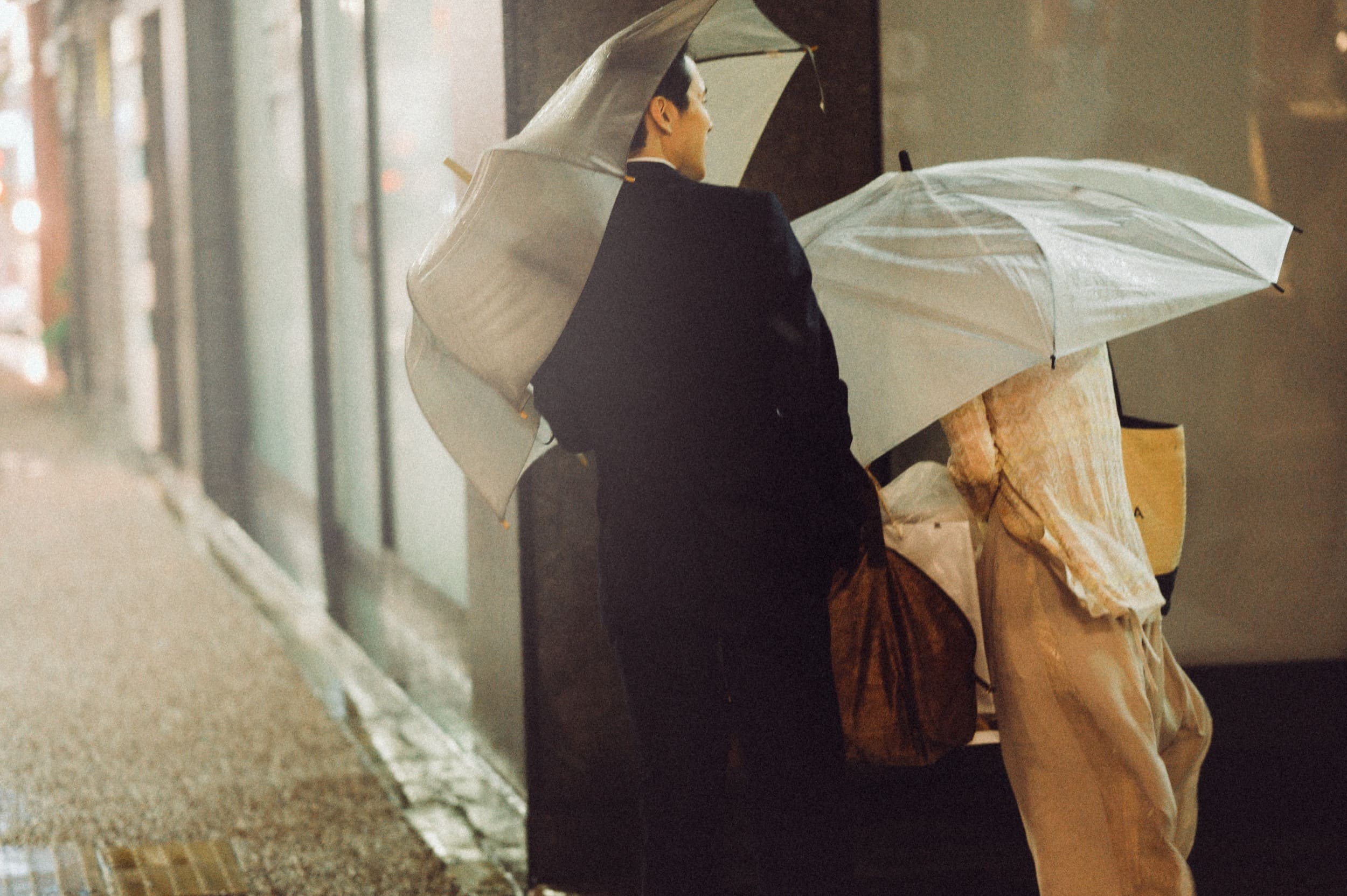
I do have a few non-technical complaints, maybe three.
My first complaint is that I shoot a lot with my Fujinon 56mm f1.2, and this 85mm f1.8 is back and forth. Both lenses and camera systems create absolutely beautiful images. From a technical point of view, the IQ seems a little better on Nikon, but while Fujifilm makes a less-than-perfect lens, I like something about the look it renders more. The Fujifilm 56mm f1.2 has a slightly more classic feel with a bit more vibe.
The Nikon Z 85mm f1.8 still has a really nice, soft, elegant rendering, but I would have to say it’s a little on the clinical side for a prime.
My second complaint is the lens hood. The lens is massive with the hood attached, making it almost unusable when shooting street photography. I wish they made a shorter hood just for protection.
I don’t understand why these companies use such massive hoods, especially since coatings are so good.
My third complaint would be the cat’s eye bokeh. Not a big deal for street photography but when shooting portraits, the cat’s eye bokeh tends to push the viewer’s eyes always towards the center of the frame, and sometimes you don’t want this. This isn’t something you’ll always see though.
Nikon Z 85mm f1.8 S Build Quality
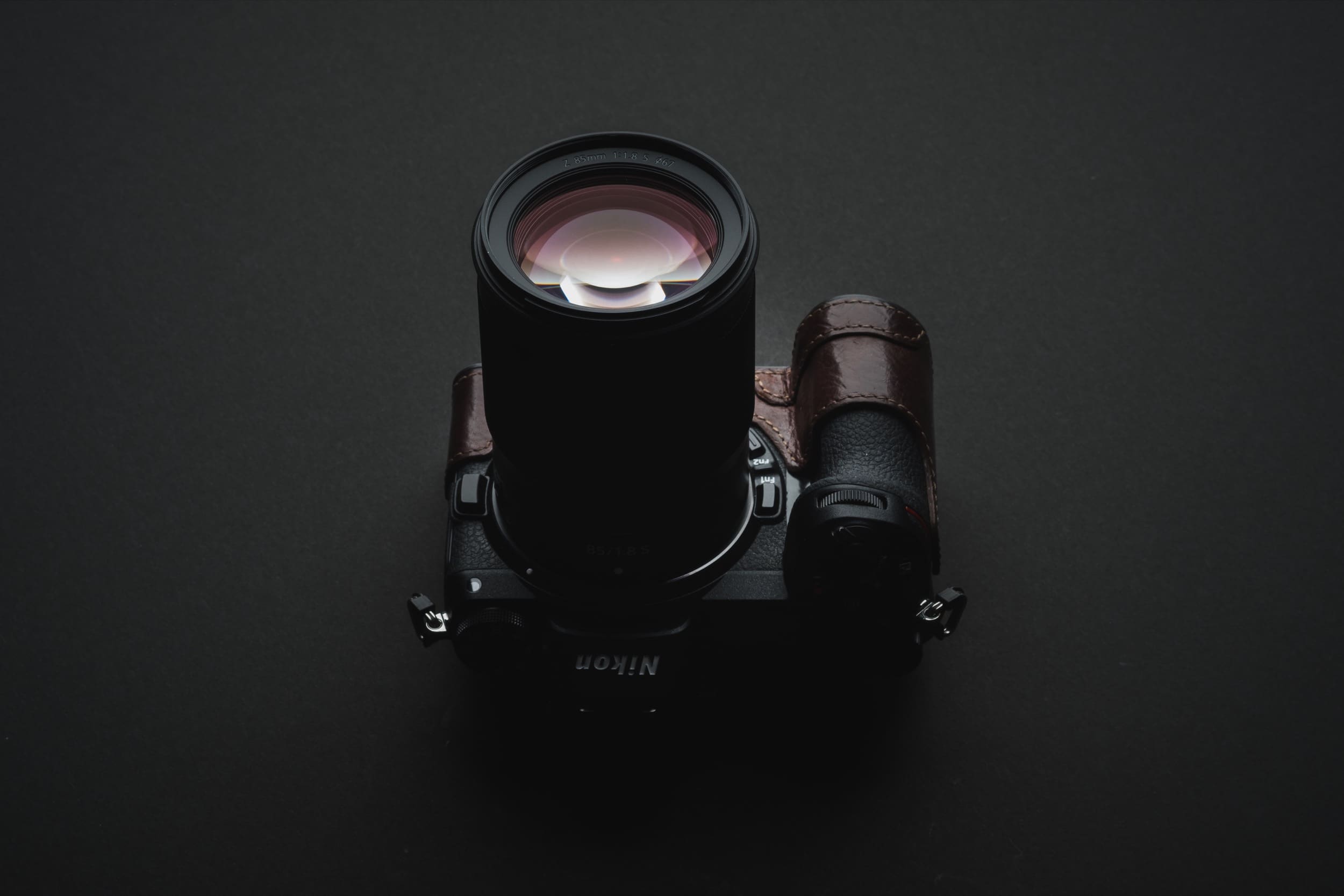
Build quality is on par with all the other Z prime lenses. The lens hood firmly stays in place and doesn’t wiggle around. There is an autofocus to manual focus switch to quickly throw the lens in manually if you shoot landscapes or video, but the manual focus will be focus-by-wire.
The lens also has a plastic outer shell on the front near the focus ring and one plastic ring near the base.
Everything else is metal. Aluminum I believe.
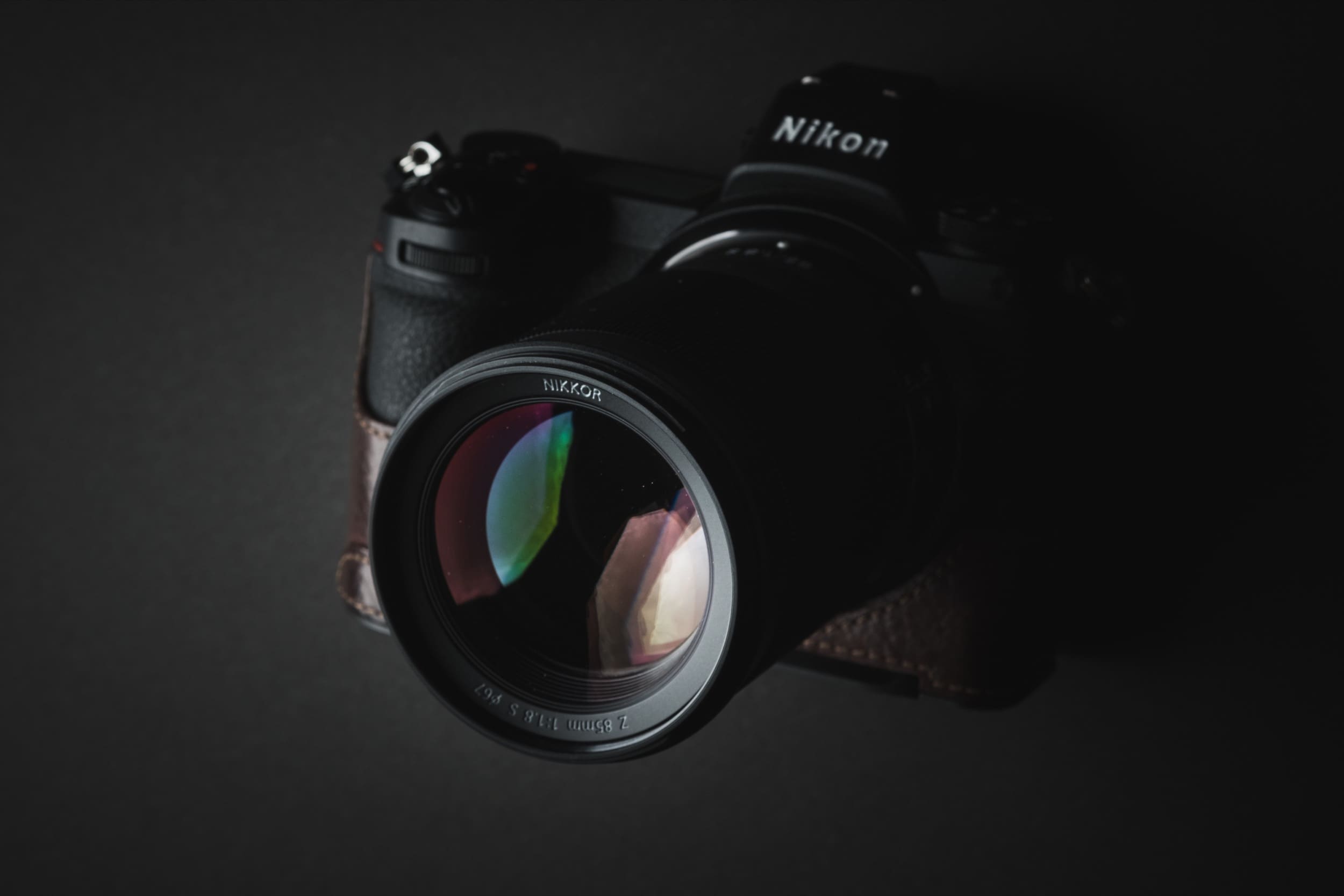
Some people think plastic is a cheaper material for lens housings, but it’s actually better than metal for regulating heat and durability.
Nikon is just using what feels like thinner plastic with these lenses than what was used on some of the older F-mount lenses, so people mistake this for cheap. But nothing feels cheap about these lenses, and they feel nice. I’ve always liked the build quality of these Z lenses, even with my first 50mm Z lens.
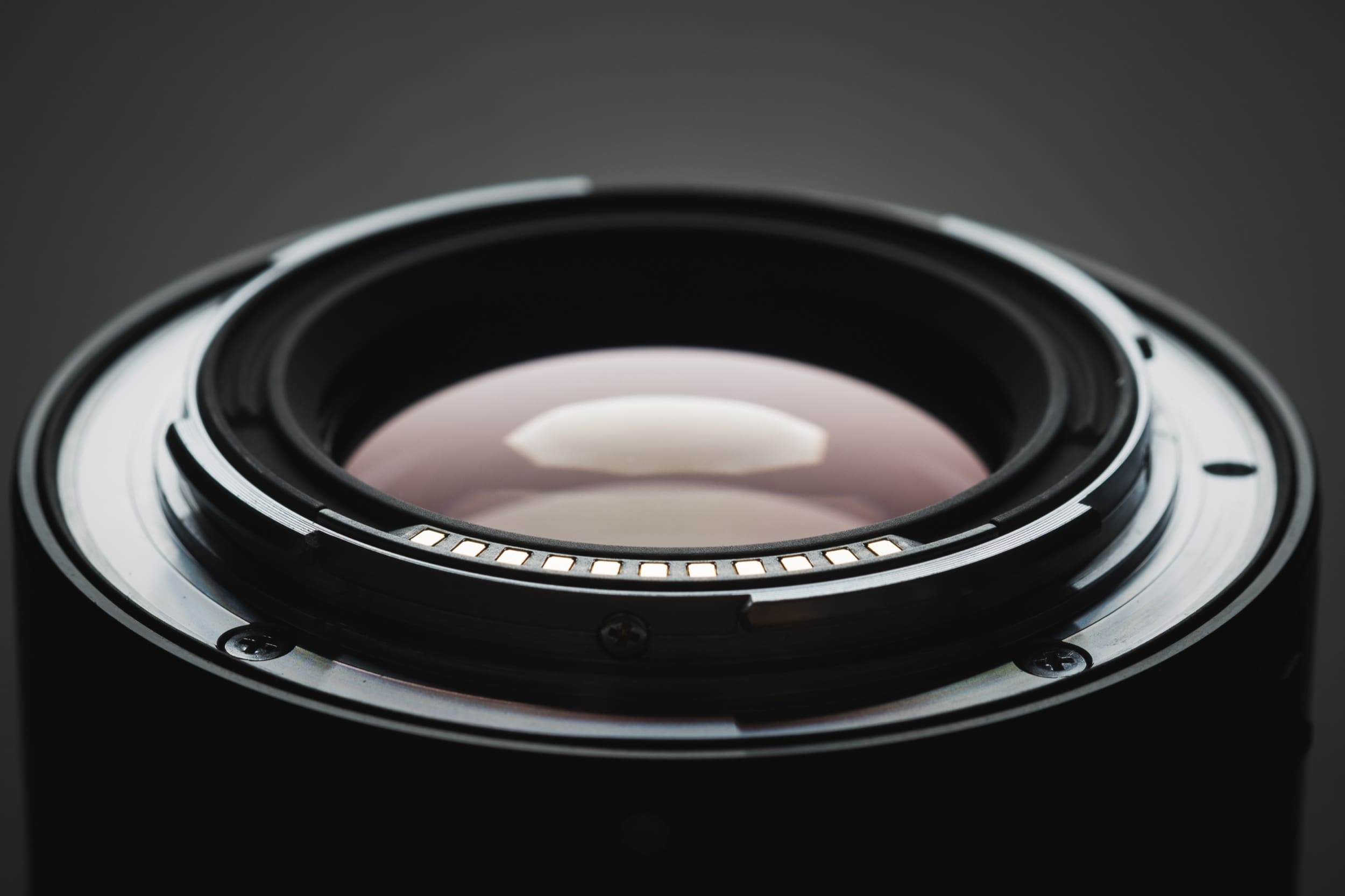
The rear element comes right up to the rear mount, so Nikon is practicing what they preach here by using every bit of that shallow flange.
In general, I like the build of these Z lenses.
Technical Characteristics
Sharpness Charts
Sharpness is good on the Z6. It just about maxes out what the Z6 can resolve with that 24MP sensor and the AA filter.
I know it would be better to review the sharpness of a Z7 here, but I never bought the Z6 to review lenses; I fell in love with the system, so here I am.
Anyway, if you are a Z6 shooter, you’ll be pleased to see that there is very little difference in sharpness between the corners and the center.
One thing I have noticed is that Nikon does not artificially add as much digital sharpness to the RAW files as Fujifilm and Sony do. So, if you start to see people comparing “sensor sharpness” between systems again, as they did in 2014, just know that Sony and Fujifilm add a baked-in digital sharpness to the RAW files, which would translate to about +15 sharpness on the slider in Lightroom.
Center Sharpness
At f1.8, the sharpness is slightly softer and progressively gets sharper as you stop down. At f2.8 and beyond, the image has some extra crispness.
Sharpness looks to peak at f5.6, f8 even looks good, and by f11, you start to see diffraction. You’ll likely see diffraction at f8 on the Z7.
Very little moire on the Z6 or false colors here which is good, especially for video shooters.
Corner Sharpness
Corner sharpness is subtly softer at f1.8, crispness snaps in at f2.8, and the image gets sharper progressively until it peaks at f5.6. It’s pretty impressive how sharp the corners are when you compare them to the center.
Edge Sharpness
The edges look really good, again f1.8 is slightly softer.
Vignetting
Vignetting, Distortion, and even Chromatic Aberrations are not really an issue when you’re shooting with Z lenses since the profile corrections are carried over to the RAW files. So, the settings you use in-camera actually load directly into Lightroom automatically. This includes sharpness, color profiles, vignetting controls, distortion controls, and noise reduction.
I’ve turned off all vignetting corrections to see what sort of vignetting we are dealing with. Correcting for vignetting is easy, but you have to apply gain to the edges to do that, which can add noise and reduce dynamic range. So it’s good to know what’s going on behind the scenes.
Distortion
This lens is pretty much distortion-free for anyone other than a pixel peeper. But there is some minor pincushion; you’ll never see it because it’s always corrected in the RAW, even if it’s turned off in the Camera. I had to load the RAWs into Iridient Developer and strip the profile to see it.
Chromatic Aberrations
I have never seen Chromatic Aberrations, so I don’t have any great samples. This is the best I can come up with. You can see some green on that center branch.
Flaring
There is almost no flaring.
I usually shoot without a lens hood or UV filter unless it’s raining. Even with the best B + W nano filters, using a UV filter can sometimes cause flaring and a reduction in contrast.
I mount my lens hood backward to keep the system smaller while shooting; then when I get on the bus or train, I pop the hood back in the normal position to protect the front element.
Sun Stars
Also known as headlight stars. Looks good. I like nice, clean star patterns like this.
Autofocus
The autofocus is very good. It has two built-in focus motors, which allow the lens to better correct for the spherical aberrations caused by focusing at close distances.
How does autofocus perform in the real world?
If my little kids are running toward me, the camera will keep up with them until they get fairly close, at which point it starts to lag as the depth of field becomes too shallow to work with the fast motion.
I shoot in AF-C, and what’s important to me is how well the lens adjusts with movement. Many people talk about lens autofocus speed in AF-S mode, where they focus on a coffee cup and then on a far object, but in the real world, that doesn’t matter so much because even a lot of slow AF lenses still do this fast enough. In the real world, you need the lens to quickly communicate and drive the elements, making micro-adjustments as smoothly as the tracked object moves around. This lens does that well.
Compared to the Nikon Z 50mm f1.8 / Z 35mm f1.8
The Nikon Z 50mm f1.8 does focus faster, but not by much. It’s usually a little more difficult for a camera to focus a long lens since it has a shallower depth and a tighter angle of view, so this could be contributing to the slight decrease in performance from the 50mm f1.8. That 50mm is godlike, though. Unbelievable.
Of the three I have, the Z 35mm f1.8 focus is the least consistent. I get a lot more out-of-focus shots with that lens. But again, it could be the nature of that lens. I’m often shooting way closer to the subjects (my kids) with the 35mm, and their fast, unpredictable movements are a little more difficult to track at close distances.
Of the Z lenses I have, the Z 50mm is the fastest-focusing in terms of tracking, acquisition, and consistent performance. Just behind that is the 85mm, and then the 35mm is behind that.
Autofocus For Video
There is some focus breathing, but you might not notice it as long as you don’t do any big focus racks from close to infinity.
The Nikon manual focus controls are also extremely smooth. I don’t see little steps when fine-tuning focus as with many of my Fujinon lenses.
Art & Character
Focus Falloff
Rendering to the out-of-focus areas or the transitions from into out-of-focus is extremely smooth and soft. It’s a very elegant look that is a little unique to this lens compared to my other 85mm equivalent lenses.
Its focus falloff is even throughout the lens, so it has a more consistent look with the bokeh throughout the frame. Except it has cat’s eye issues.
Bokeh / Out Of Focus Areas
Lenses render different styles of bokeh, and some looks are better in some situations than others. This is why you can never have too many lenses.
Puffy, creamy, dreamy/ethereal, edgy and harsh, contrasty vibrant. One day I will build a list and demonstrations, there is another photographer review that uses some of these terms sometimes, and it would be useful to the community if we could get them locked in as acceptable terms.
Compared to my Fujifilm 56mm f1.2. This Nikon 85mm f1.8 has a puffy, bloomy bokeh that is more of a higher-contrast bokeh that is very rich but smooth.
Cat’s Eye Bokeh Samples
This lens does have quite a bit of a cat’s eye bokeh.
I know this bothers some people; some people don’t care. But it’s fairly significant compared to other 70mm or 85mm lenses. This is likely a by-product of the lens being so skinny for an 85mm which I’m assuming was done to keep the design in line with the other Z lenses, which I do appreciate.
You don’t always see it, but I will post some samples.
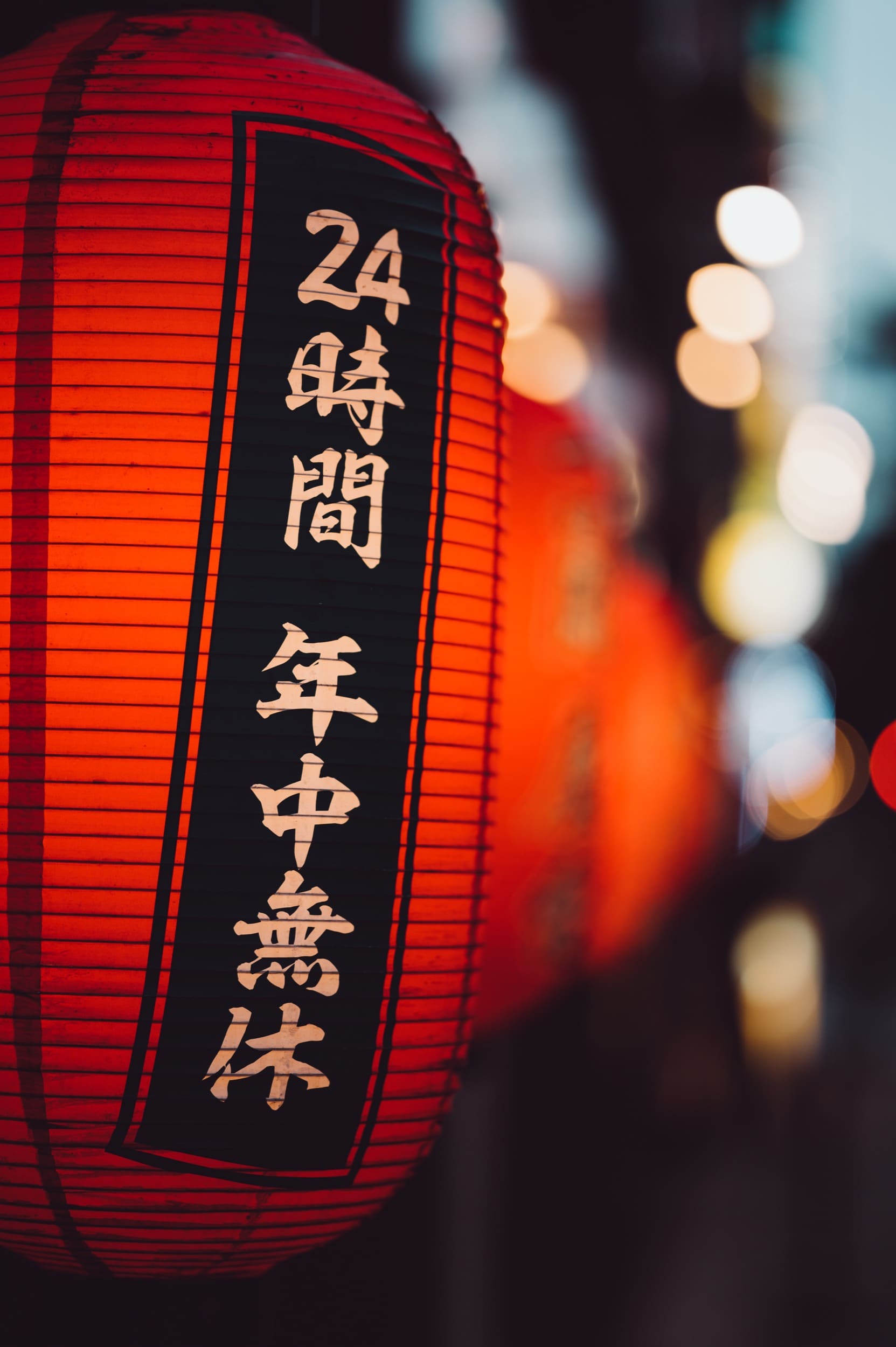
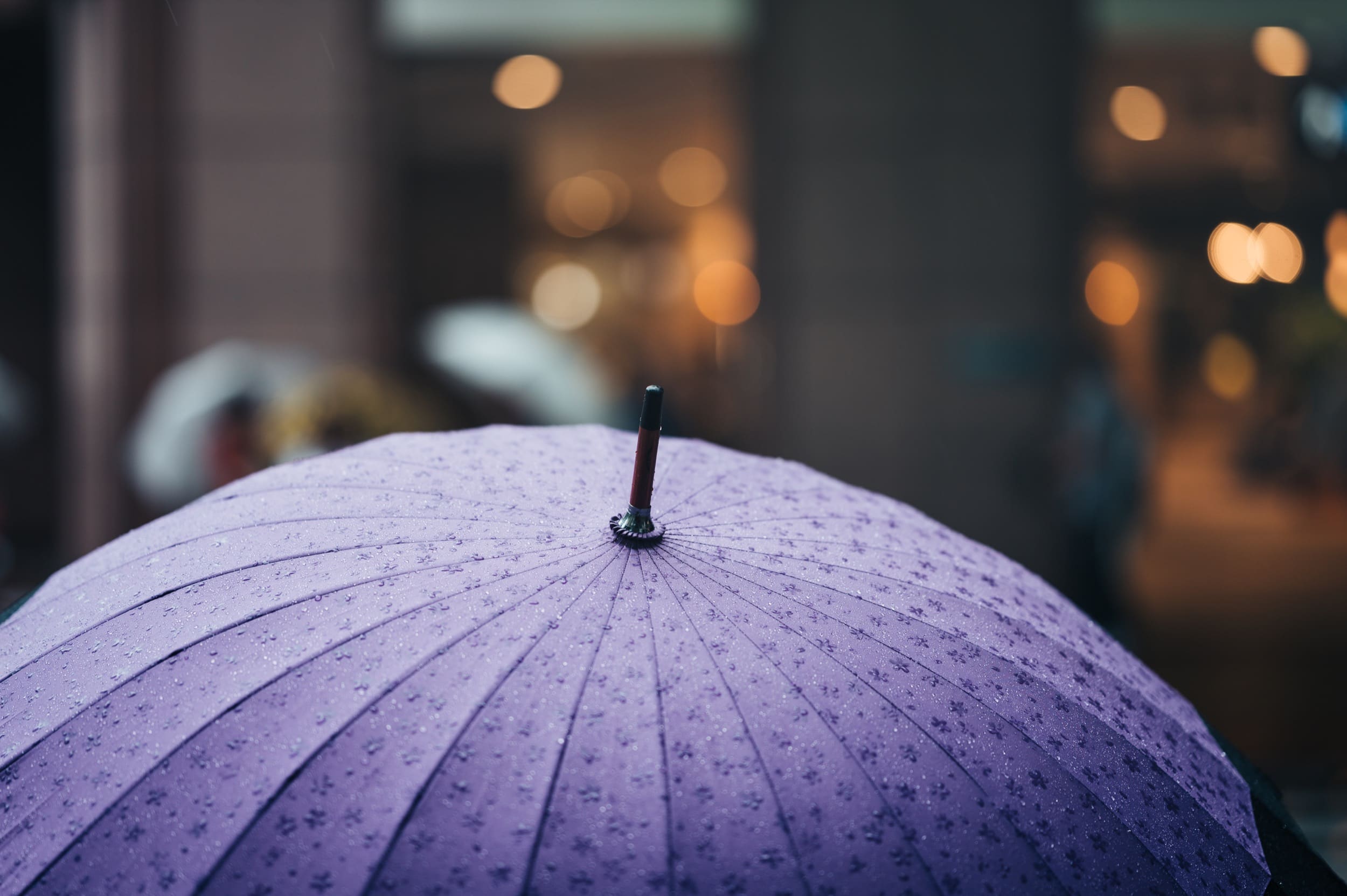
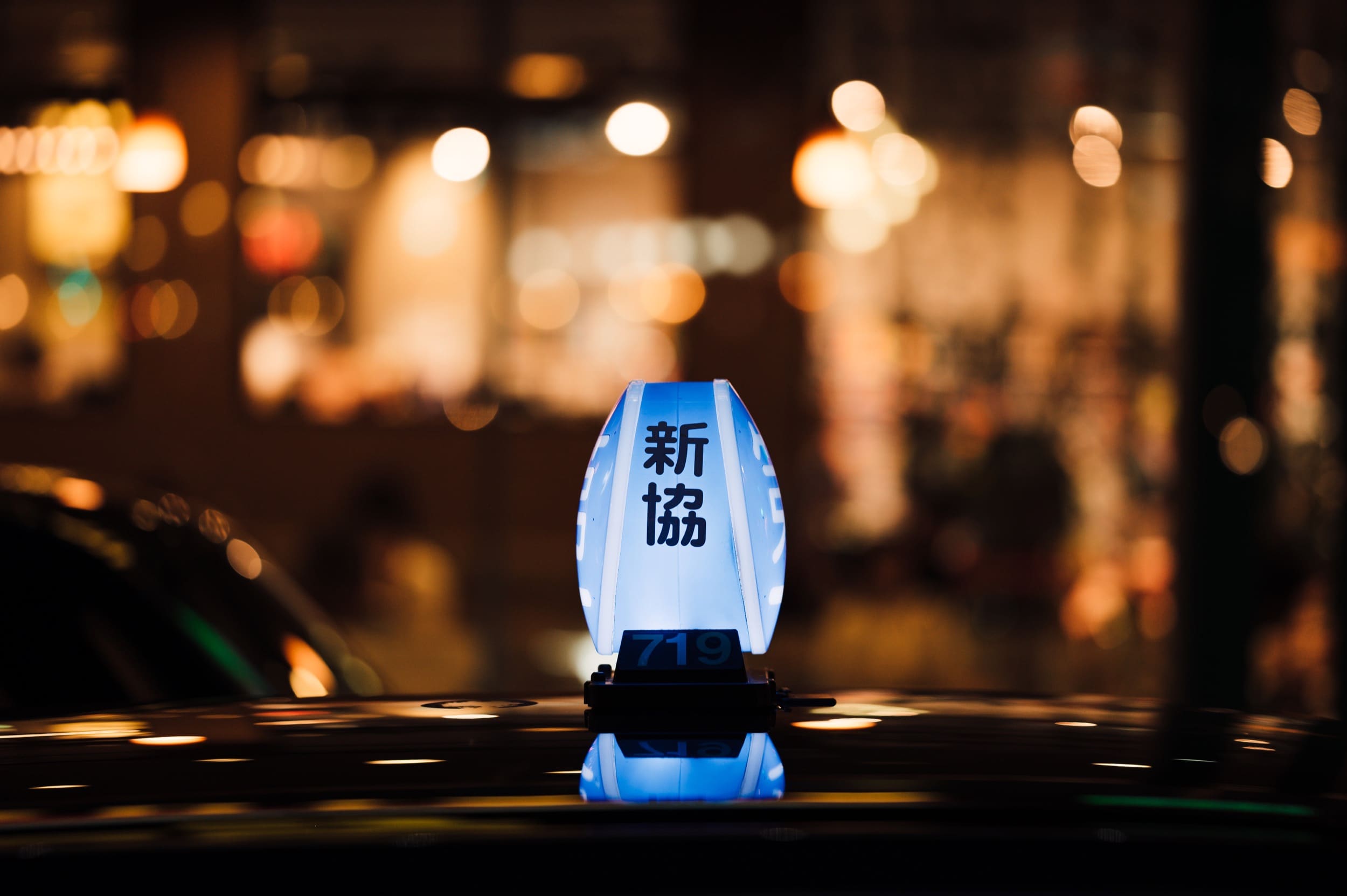
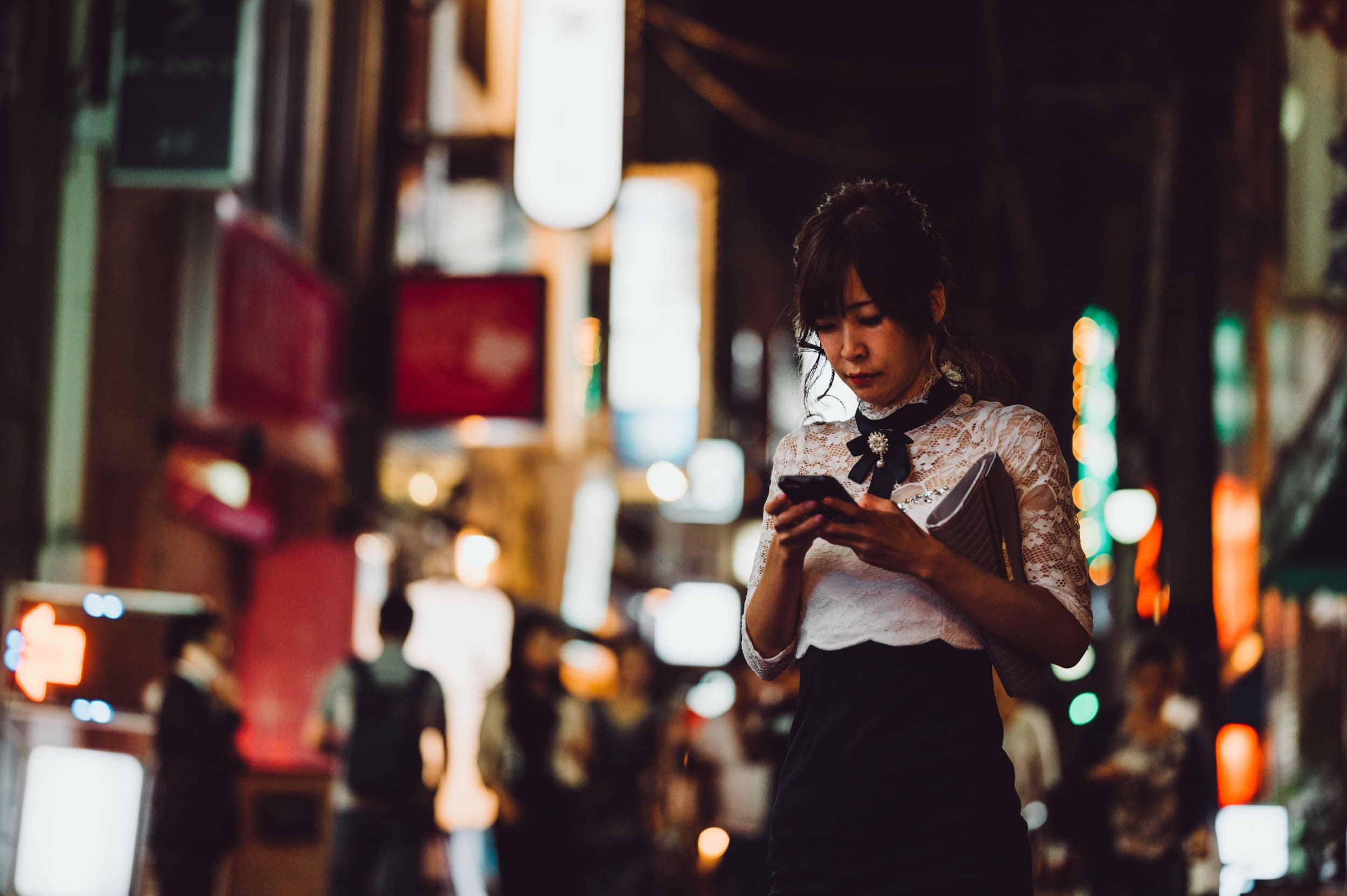
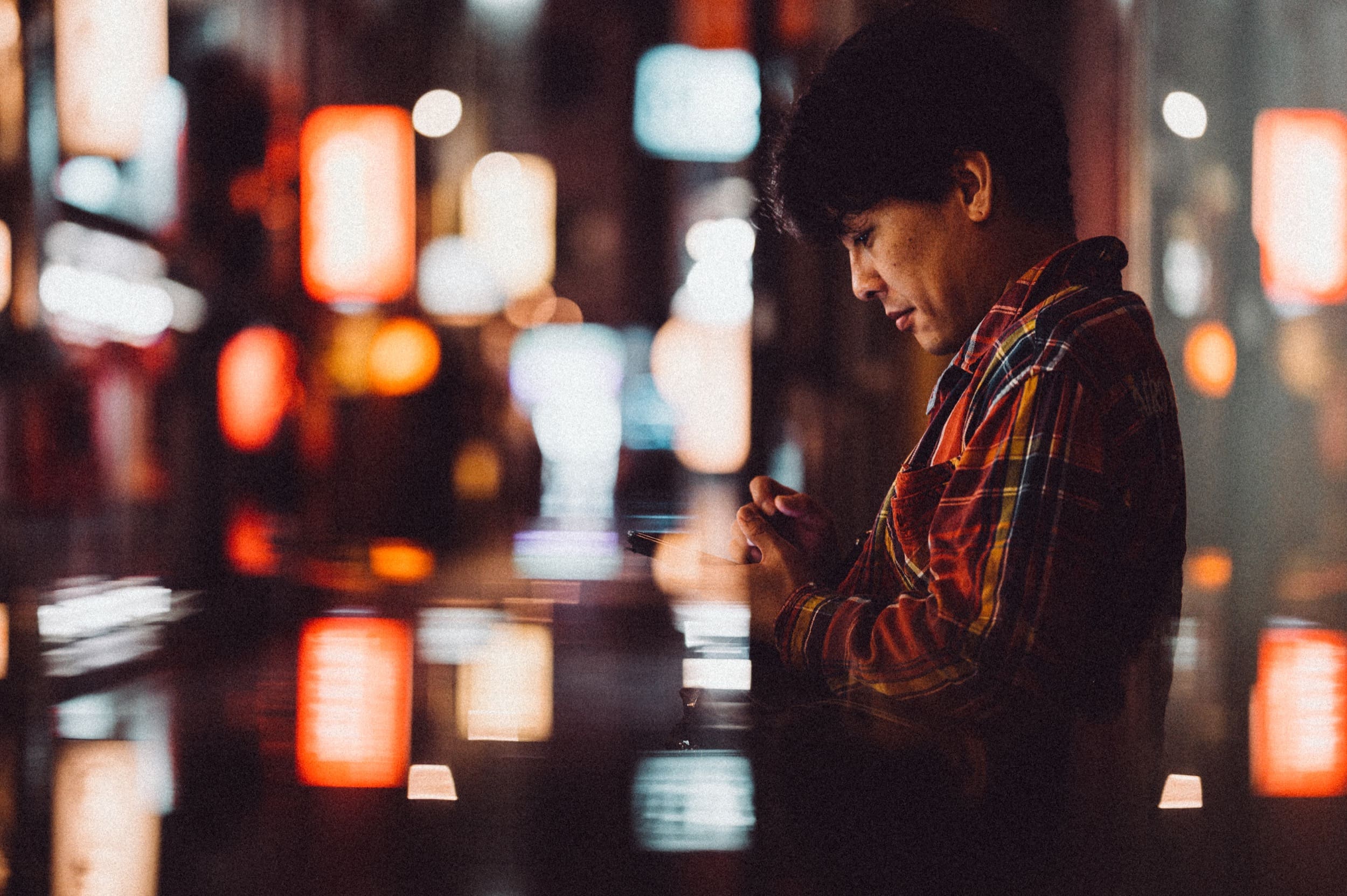
Bokeh Samples With No Cat’s Eye
Of course, you don’t always see it. It only shows up when you have little lights in the background along the edges of the frame and the subject is fairly close to the lens.
Here are some samples without the cat’s eye bokeh.
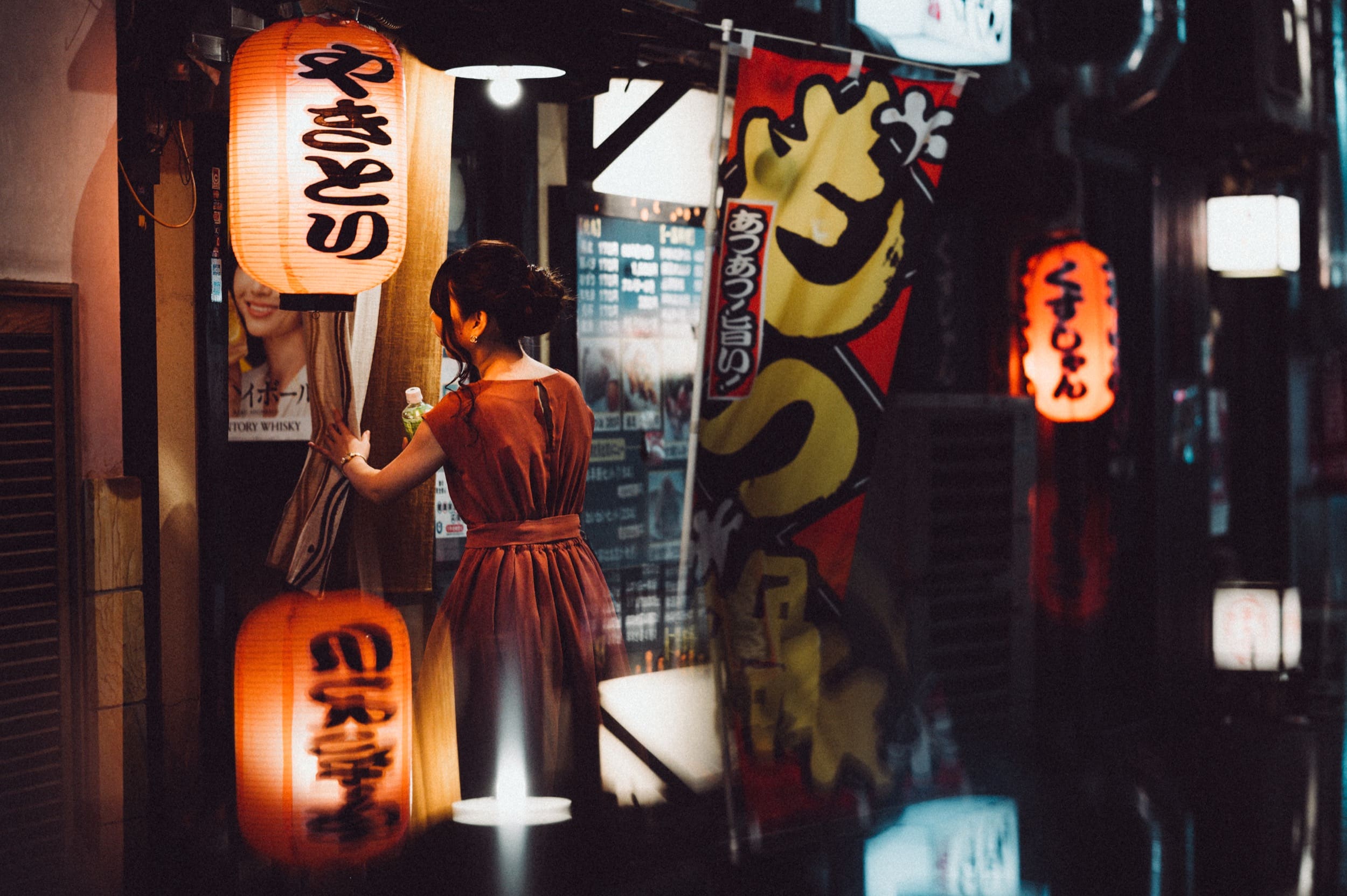
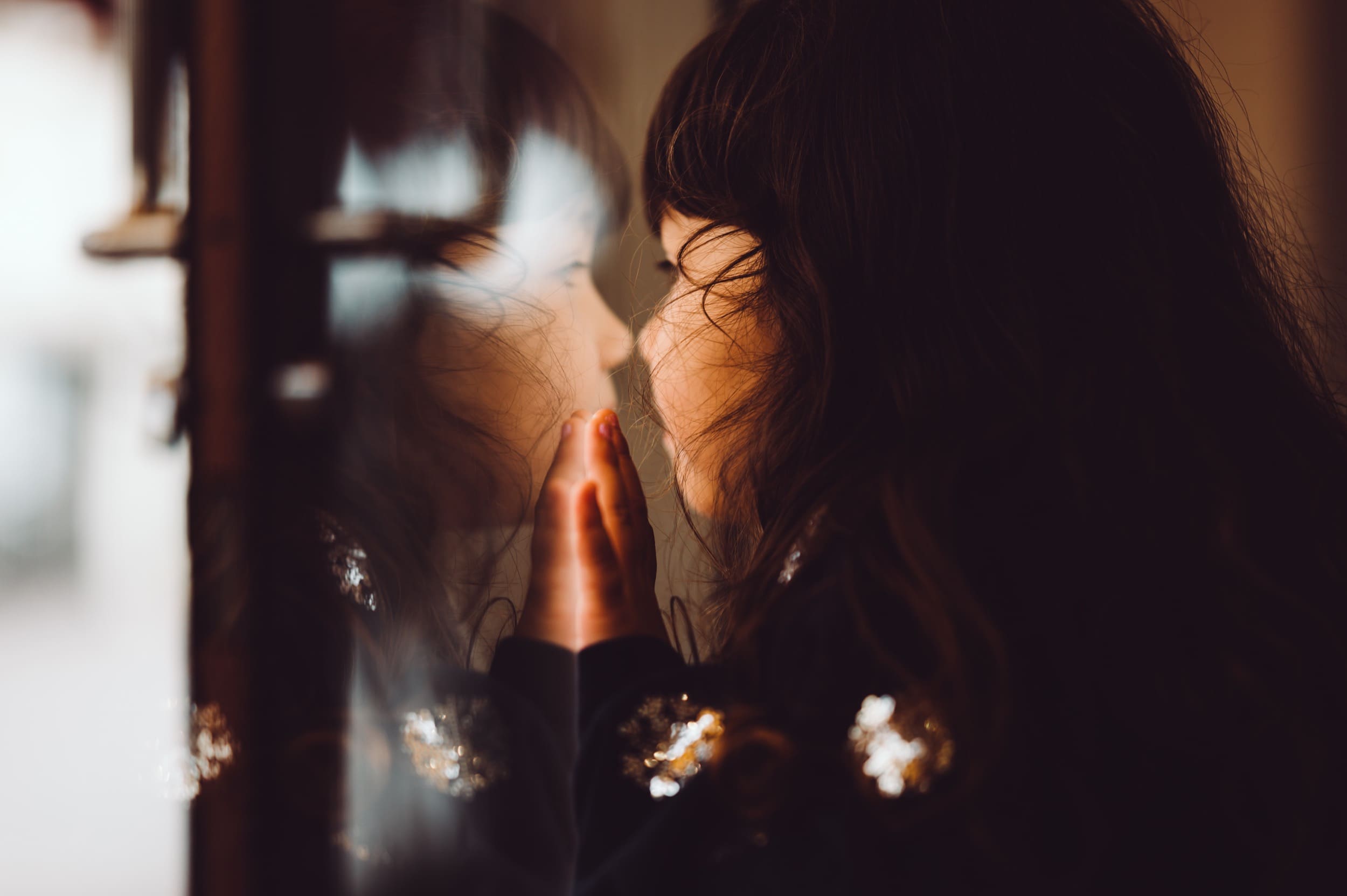
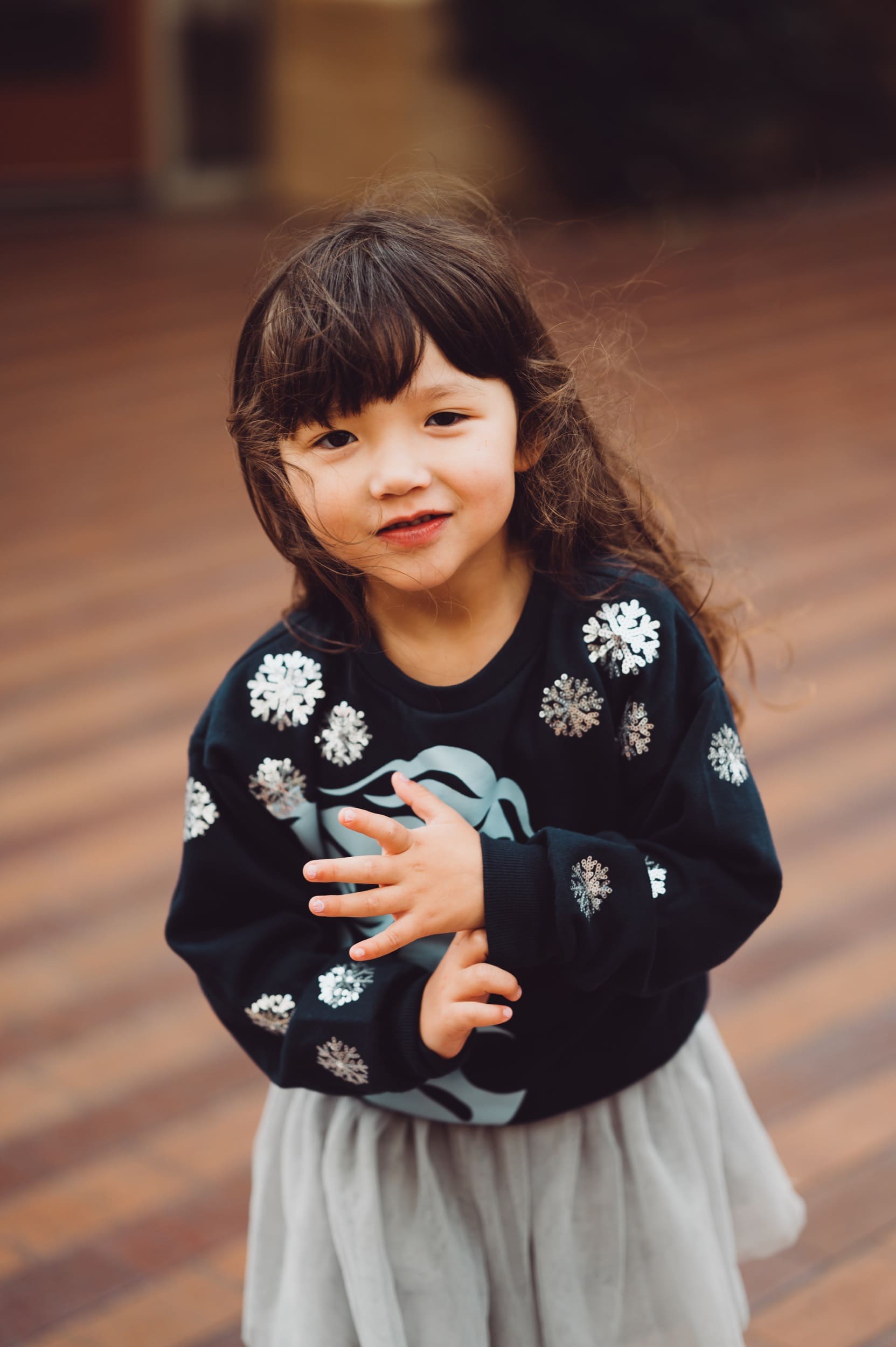
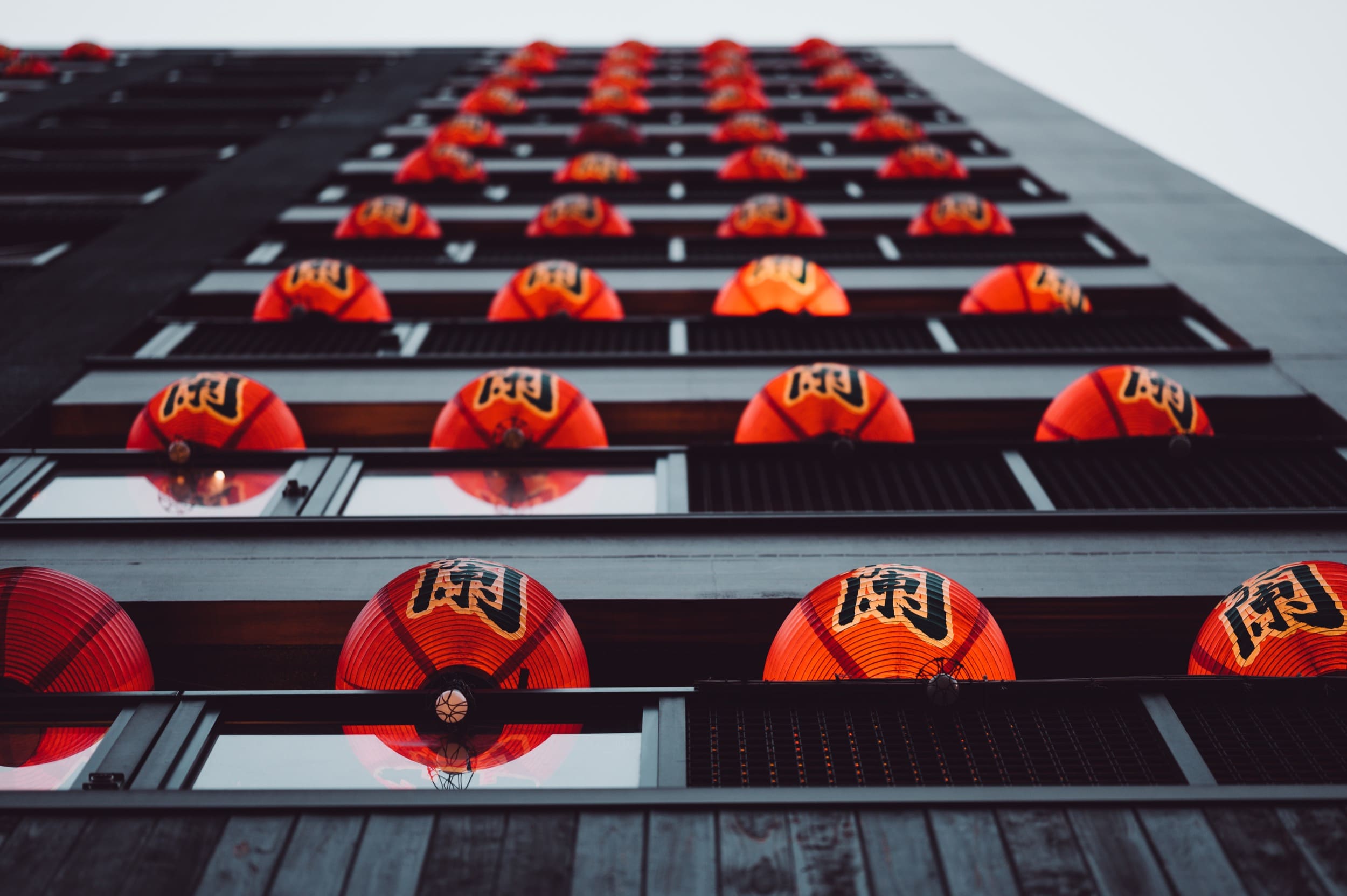
Color Rendering (SOOC)
Here are some straight-out-of-camera samples. I left everything at default in Lightroom. They’re not the best samples in the world, but I chose them because they show some interesting characteristics.
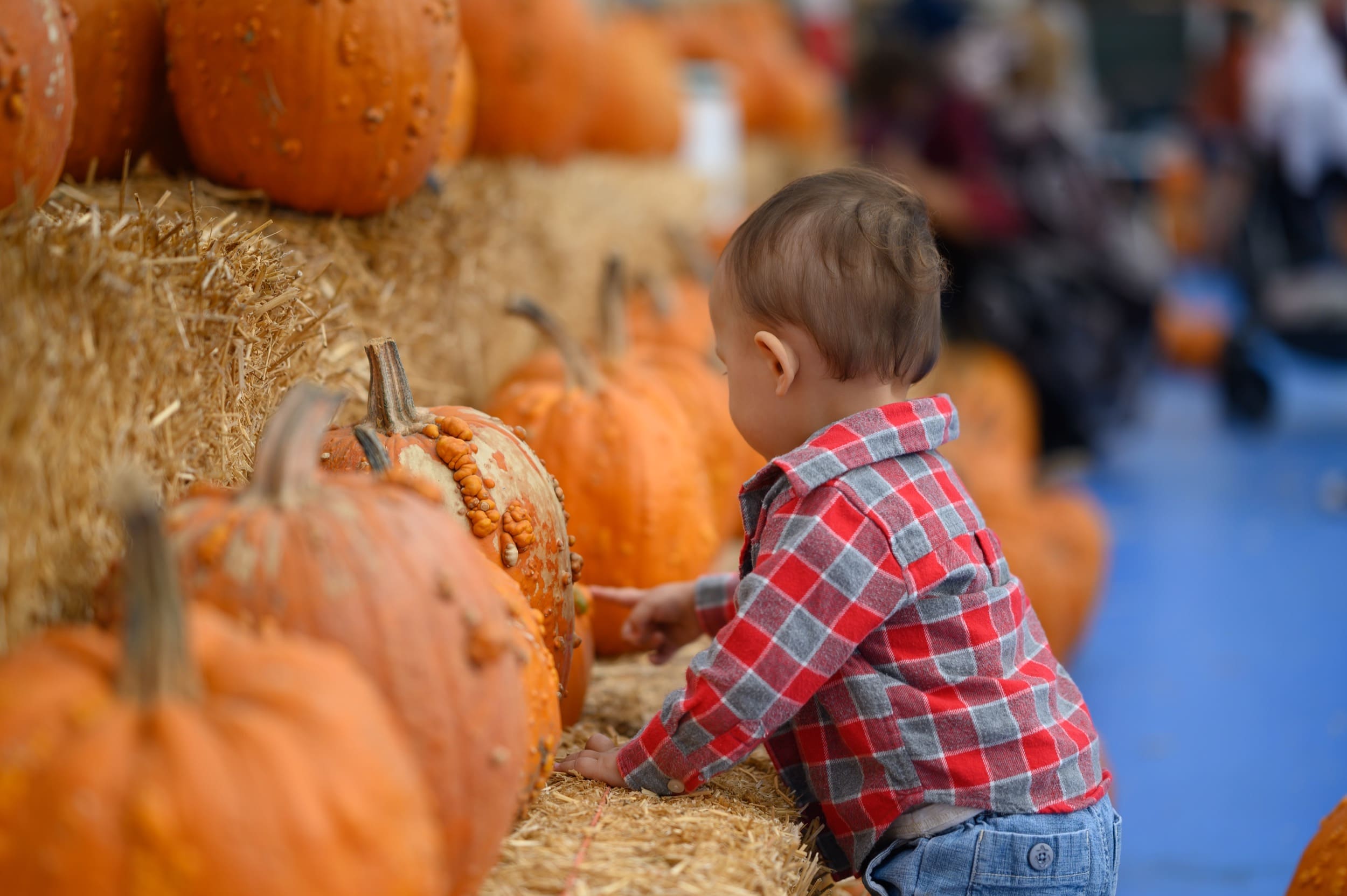


Micro-Contrast
The Nikon 85mm does lack the pop you get from some of the lower-element lenses of the past. It’s just missing that tonal detail in the mid-tone contrast, but they’re still not bad, and you can gain a lot when you go down to slower apertures like f2.8 to f5.6.
Personally, I’m using this lens for night street photography. In those low-light situations, you won’t get a lot of pop with any lens since the light itself lacks the coherency to produce great tonal detail. However, if I wanted to max out the potential of this lens’s tonal rendering, I would probably shoot more between 2.8 and f4.
Here are some samples at f1.8.
Nikon Z 85mm f1.8 Review | Bottom Line
On the technical side, this lens offers many advantages: Weather sealing, internal focus design, great sharpness from close to far, great corner-to-corner sharpness, and rich, creamy bokeh.
However, the rendering can be a little boring in terms of tonal pop, and there is a lot of cat’s eye, which some focus-breathing videographers will need to watch out for.
Overall, this lens isn’t perfect, but I’m very happy with its performance, and there is just very little to complain about at this price. It’s just one of those lenses I know I can grab anytime and use for anything, and it will work.
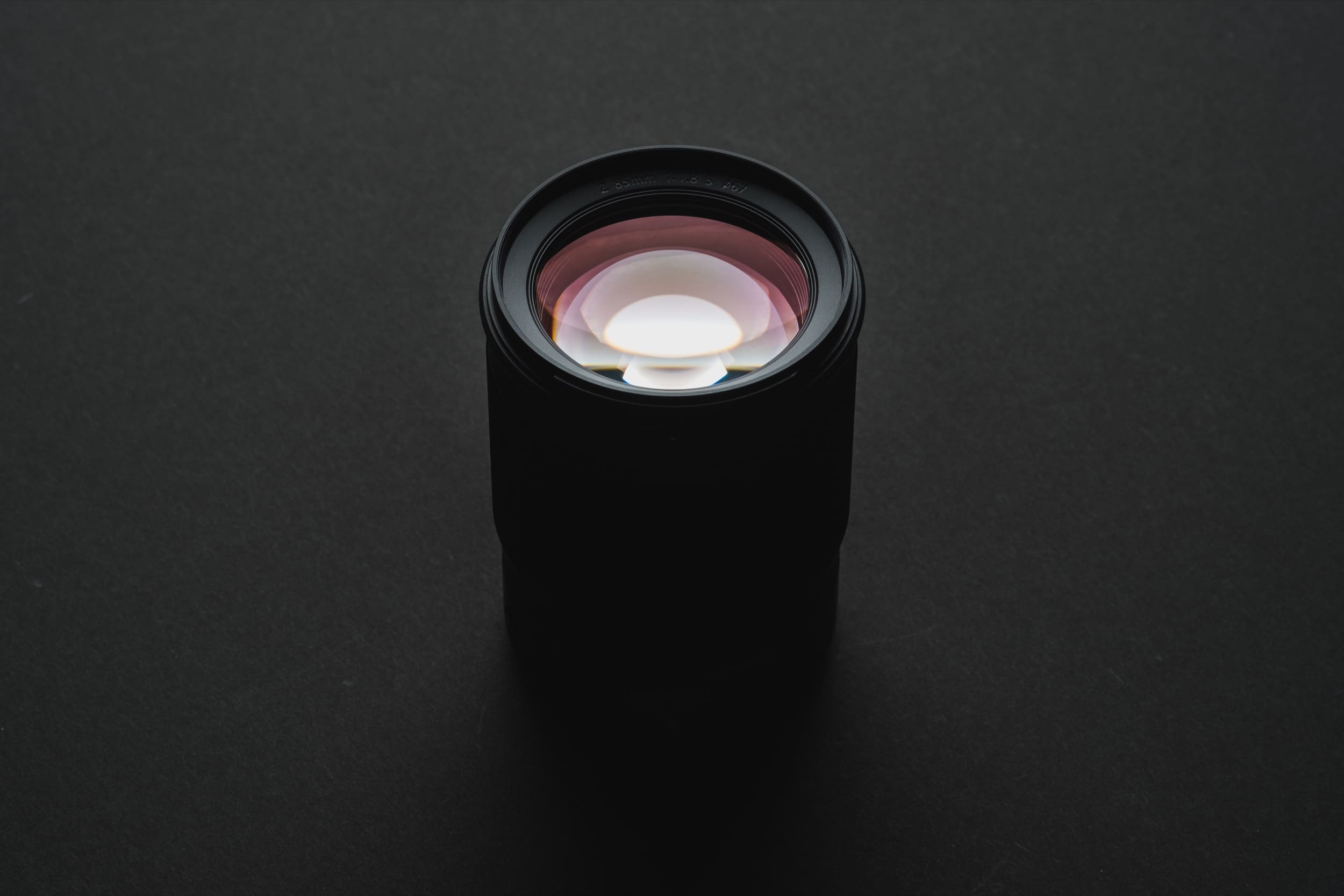
Nikon Z 85mm f1.8 Sample Photos
Most of these shots were taken during street photography during Typhoon Tapah. I can vouch for the weather sealing of the Z 85mm f1.8.
Some images are washed out because I was using a UV filter, usually completely covered with water droplets or a dirty, smudgy film, so I leaned into the look and added a bit more post-flare to give a dreamy effect.
I have had very few real issues with autofocus, except pre-firmware v2.1, when it would sometimes take a second to acquire in the dark. V2.1 has improved that somewhat, but I’ll do some more testing, and I’ll keep this review fairly updated since it’s a lens I frequently use.
The best thing about the Z6 is how quickly you can change autofocus modes once you customize the mount buttons to work with the dials. So, if the camera is ever doing anything dumb, you can switch it instantly and not lose the shot. I bounce around a lot, from eye AF and face detection to the focusing boxes, and I get flawless performance.
Nikon Z 85mm f1.8 S – Amazon / Adorama / BHphoto
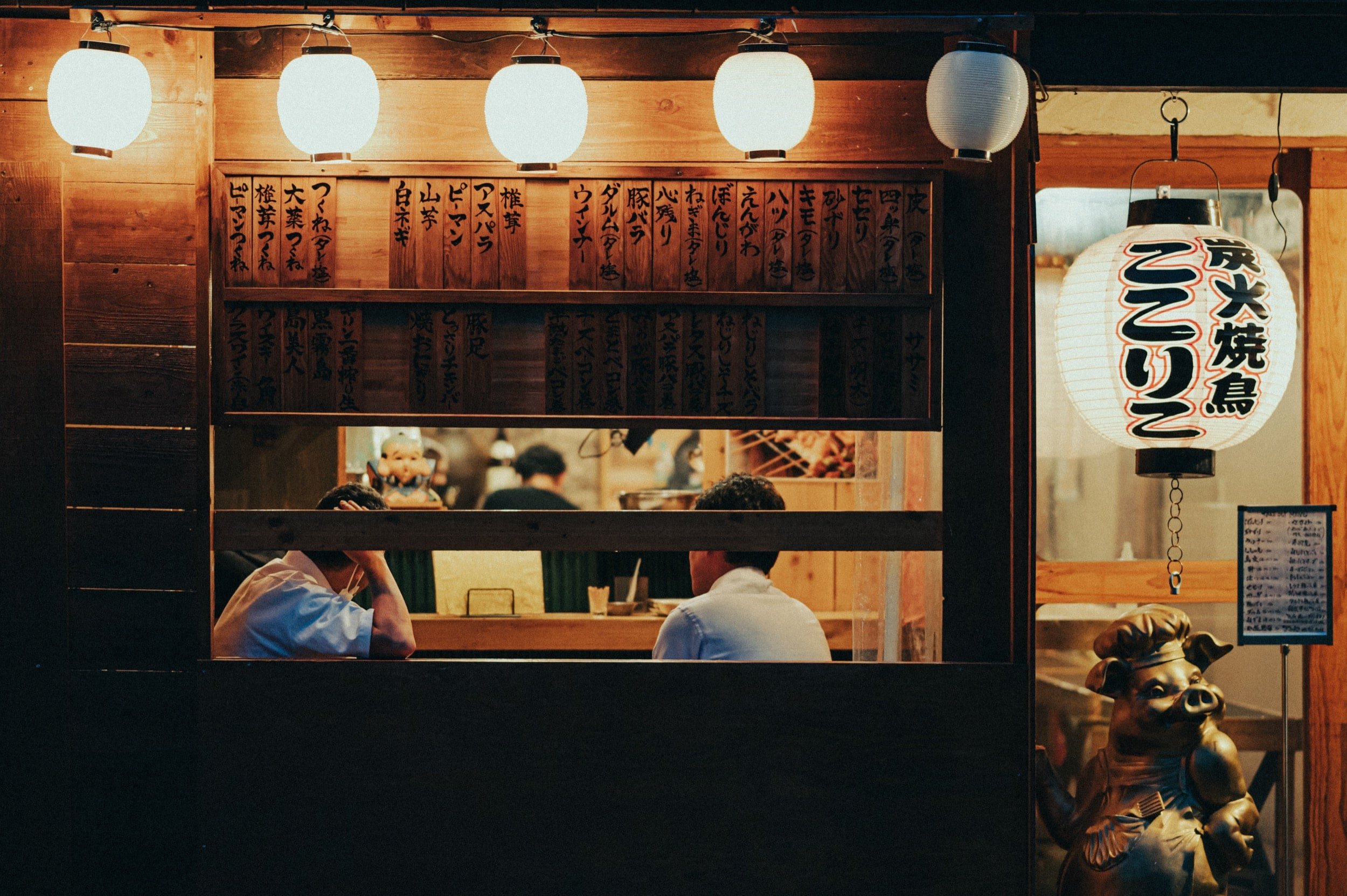
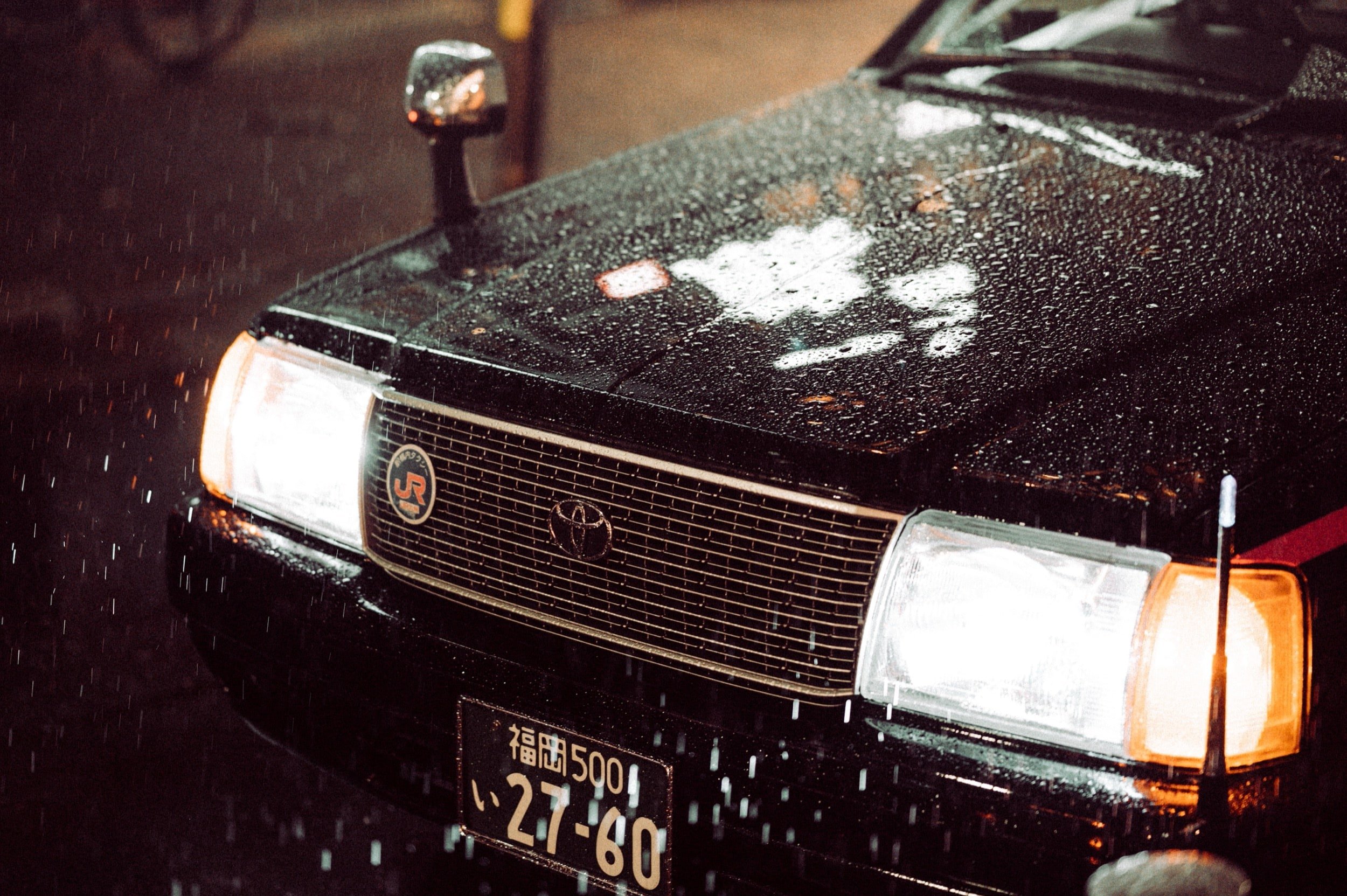



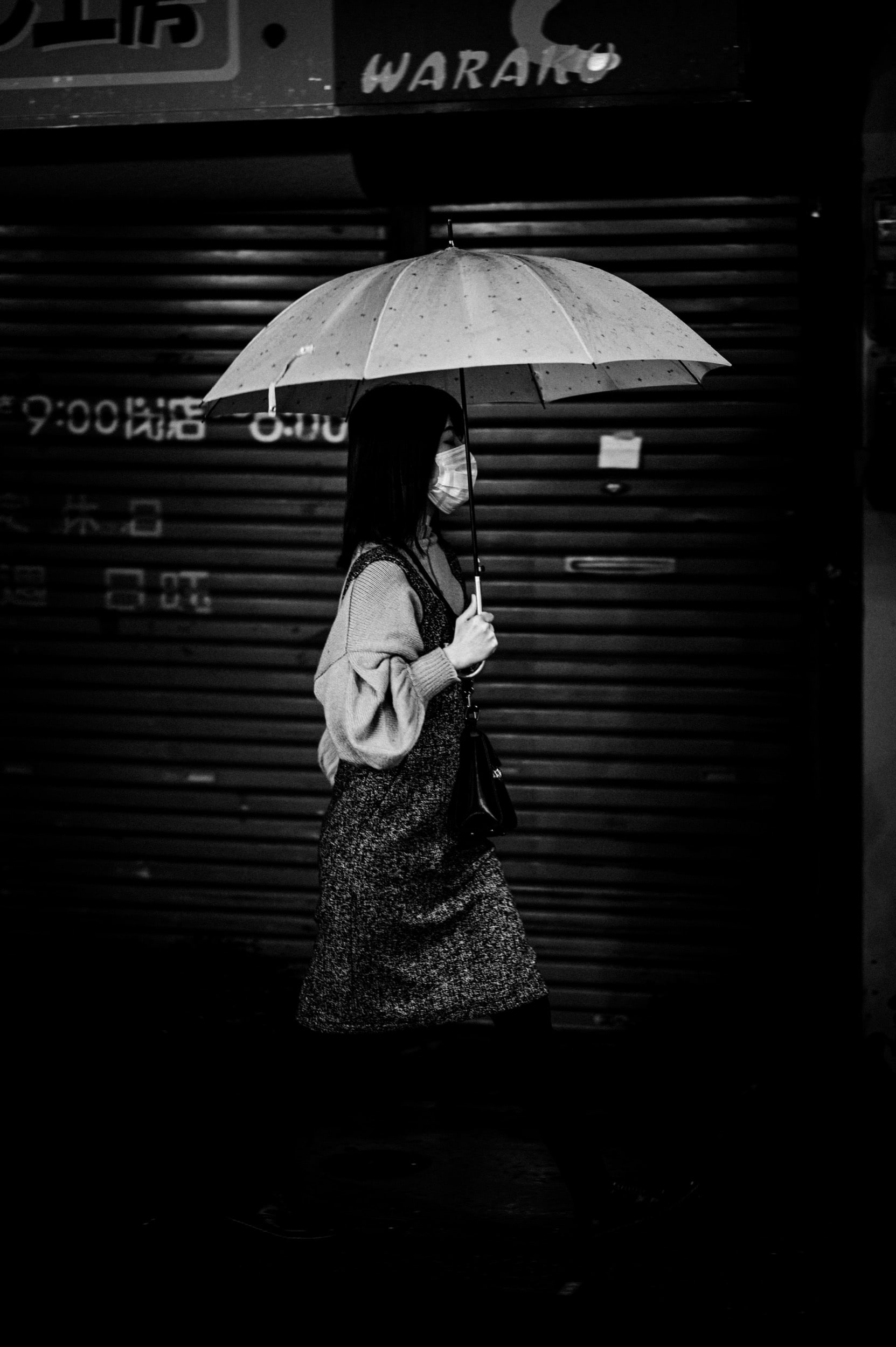
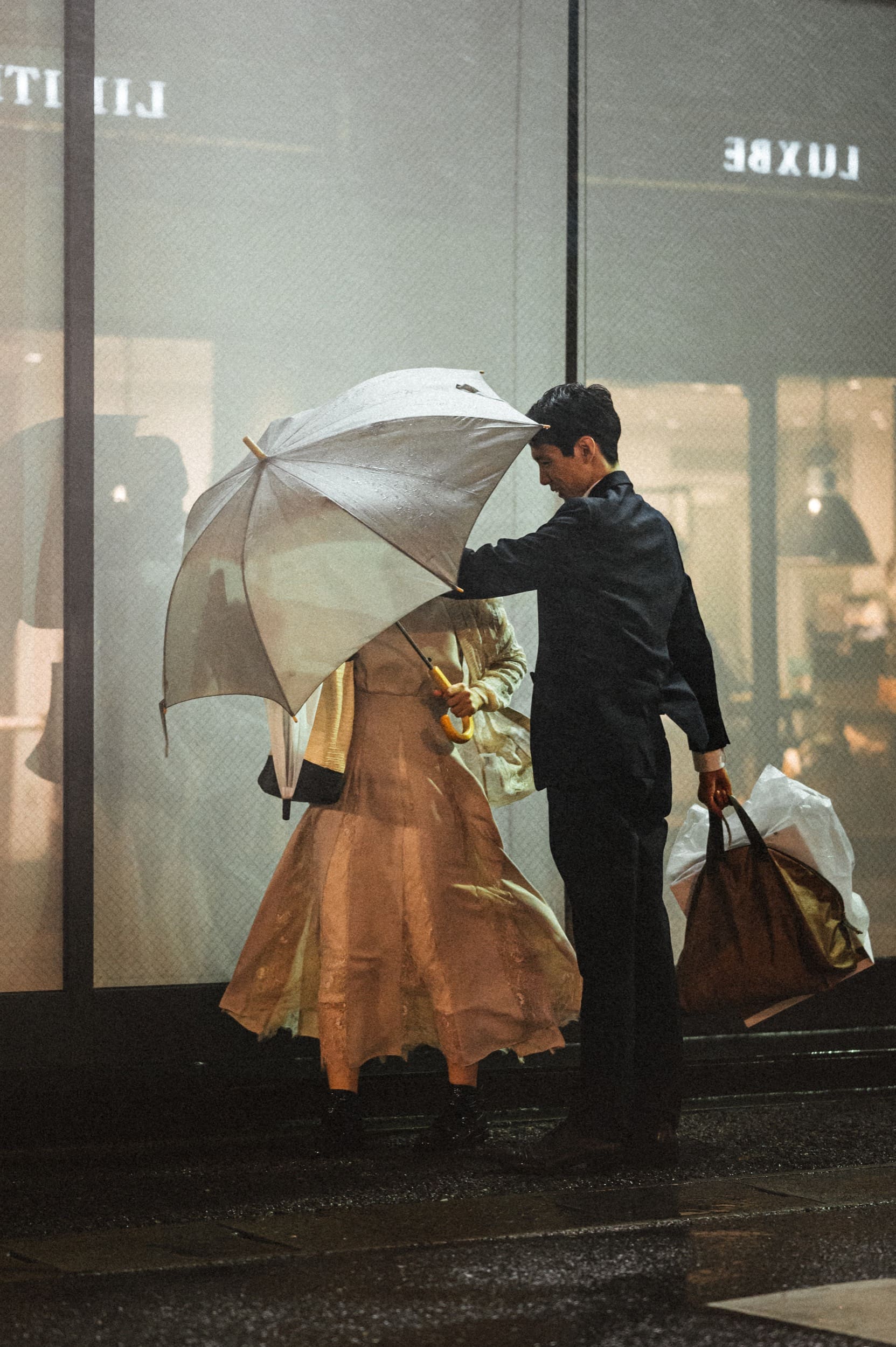
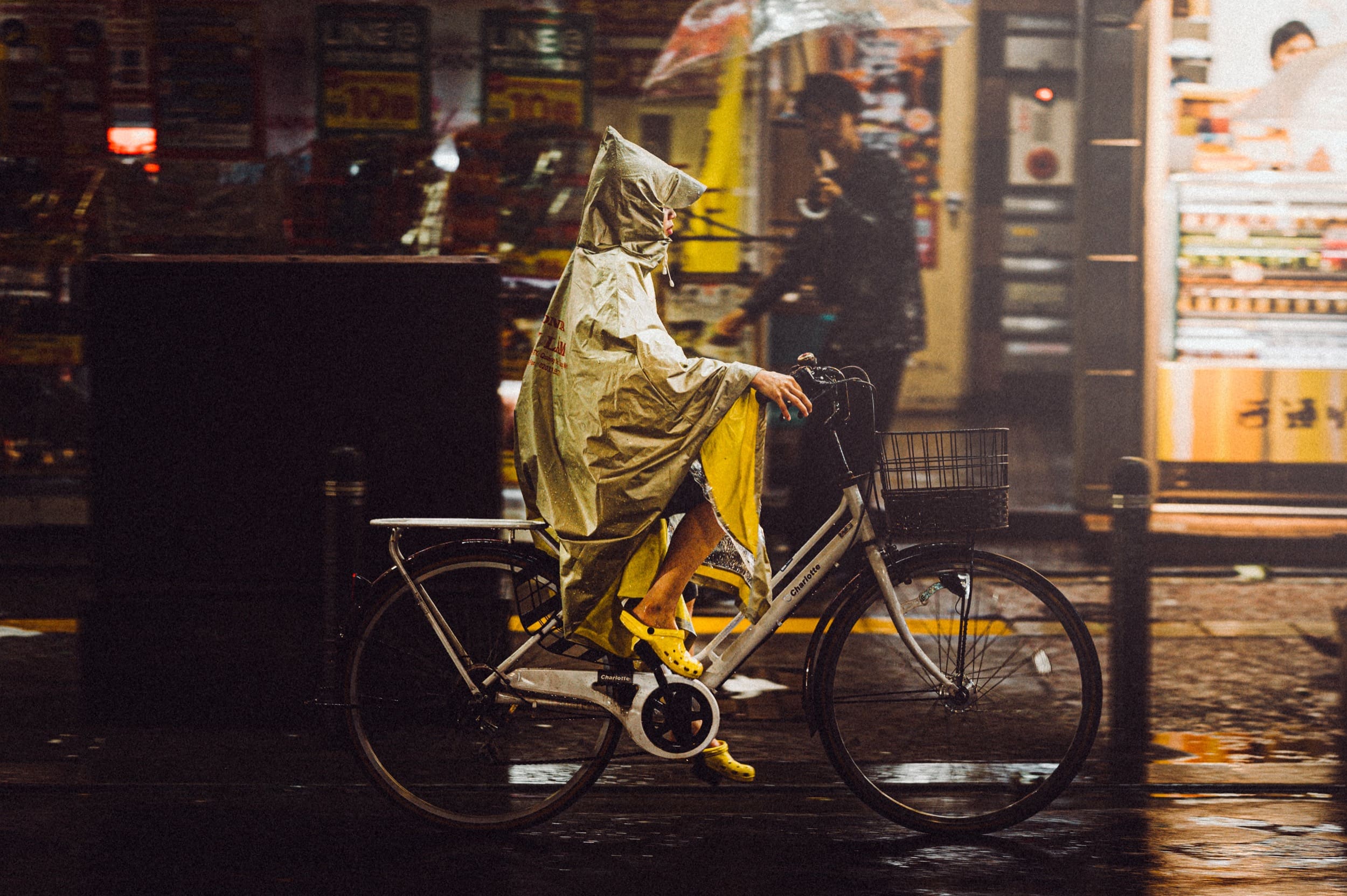
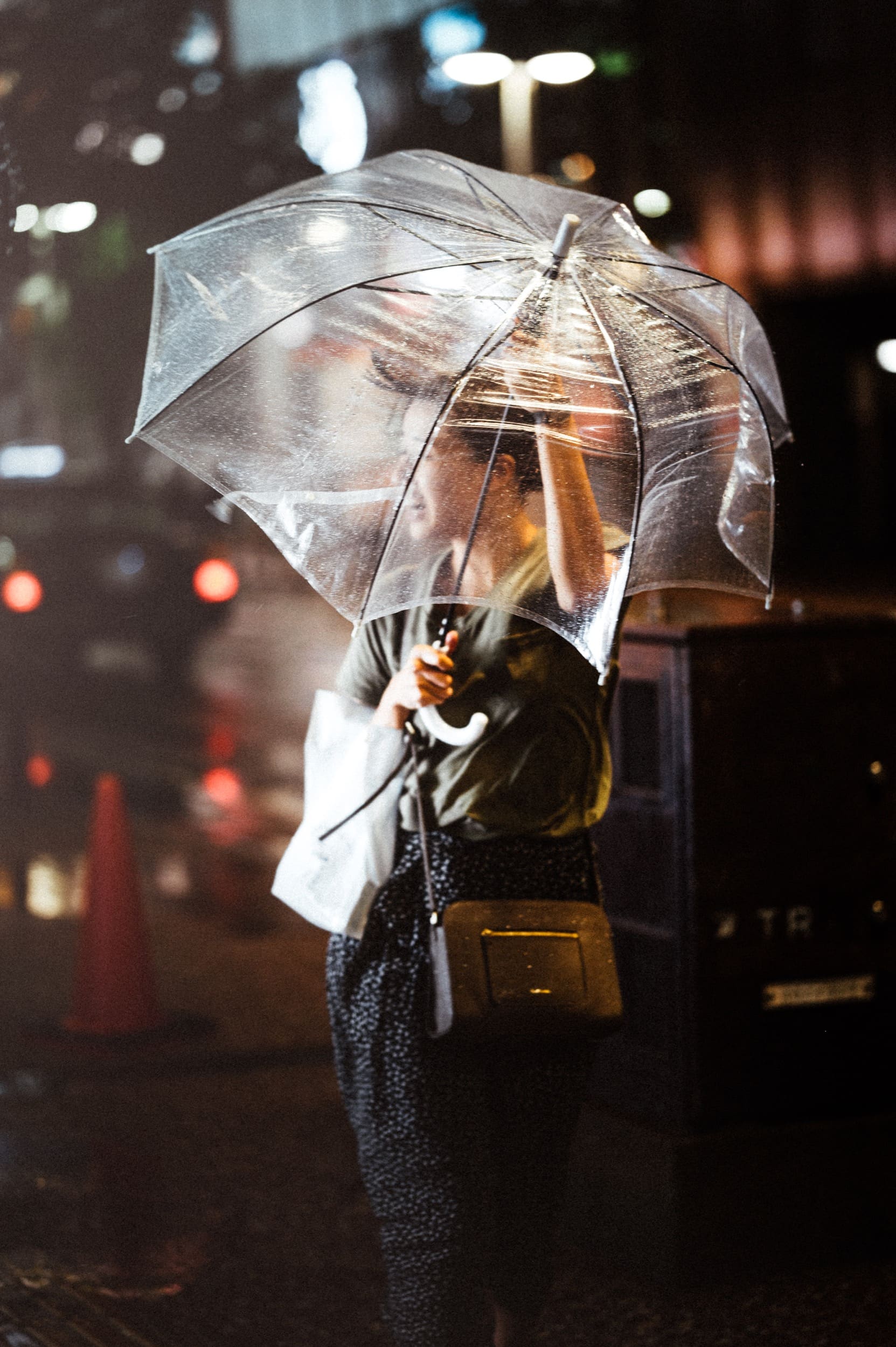



| **This website contains affiliate links. We will earn a small commission on purchases made through these links. Some of the links used in these articles will direct you to Amazon. As an Amazon Associate, I earn from qualifying purchases. |

